We are CLOSED Monday, February 19th for Family Day!
Need Support? 1-800-535-3751
Free shipping on Tilt Hydrometers !

- Shop Balances & Scales Laboratory Micro & Semi-Micro Balances Analytical Balances Precision Balances Top Loading Balances Basic Weighing & Education Mechanical Balances Industrial Bench Scales Compact Scales Counting Scales Checkweighing Scales Floor Scales Precision Industrial Scales In-Motion Checkweighing Hanging Scales Indicators & Bench / Floor Bases Indicators Bench & Floor Bases Legal For Trade Class II Measurement Canada Approved Class III Measurement Canada Approved Moisture Analyzers Balance & Scale Accessories Calibration Weights Printers Power Supply Relays & Outputs Weigh Dishes
- Shop Lab Instruments & Supplies Instruments Portable Water Analysis Meters Bench Top Meters, Monitors & Controllers Electrodes & Probes Hydrometers Thermometers Viscometers Supplies Bottles Glass & Plasticware Porcelainware Filtration Pipettes & Pipettors Solutions & Standards pH Testing Timers Sample Handling Bottles Safety Cleaning Supplies Clamps & Supports Lab Jacks Storage & Carrying Cases
- Bottle Top Dispensers
- Centrifuges
- Microscopes
- Mixers & Homogenizers
- Stirrers & Shakers
- Vacuum Pumps
- Beer Brewing & Testing
- Agriculture & Horiculture
- Waste Water & Environmental Testing
- General Laboratory Supplies
- A&D Weighing
- Adam Equipment
- Benchmark Scientific
- PolyScience
- Quincy Labs
- Whatman Filter Paper
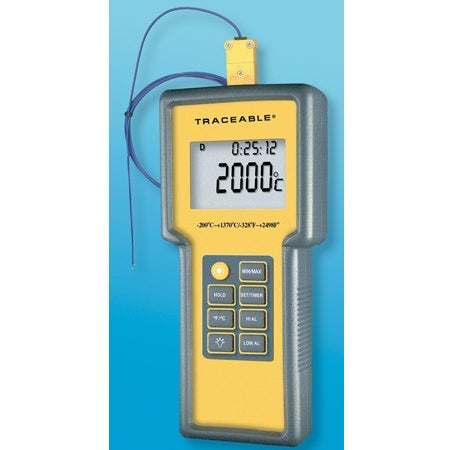
Check here to indicate that you have read and agree to the Terms & Conditions , and the Policies , including important information regarding sales and use taxes depending on your location.
- Shop Balances & Scales
- View all icon-chevron
- Micro & Semi-Micro Balances icon-chevron
- Analytical Balances icon-chevron
- Precision Balances icon-chevron
- Top Loading Balances icon-chevron
- Basic Weighing & Education icon-chevron
- Mechanical Balances icon-chevron
- Bench Scales icon-chevron
- Compact Scales icon-chevron
- Counting Scales icon-chevron
- Checkweighing Scales icon-chevron
- Floor Scales icon-chevron
- Precision Industrial Scales icon-chevron
- In-Motion Checkweighing icon-chevron
- Hanging Scales icon-chevron
- Indicators & Bench / Floor Bases
- Indicators icon-chevron
- Bench & Floor Bases icon-chevron
- Legal For Trade
- Class II Measurement Canada Approved icon-chevron
- Class III Measurement Canada Approved icon-chevron
- Moisture Analyzers icon-chevron
- Balance & Scale Accessories
- Calibration Weights icon-chevron
- Printers icon-chevron
- Power Supply icon-chevron
- Relays & Outputs icon-chevron
- Weigh Dishes icon-chevron
- Shop Lab Instruments & Supplies
- Instruments
- Portable Water Analysis Meters icon-chevron
- Bench Top Meters, Monitors & Controllers icon-chevron
- Electrodes & Probes icon-chevron
- Hydrometers icon-chevron
- Thermometers icon-chevron
- Viscometers icon-chevron
- Bottles icon-chevron
- Glass & Plasticware icon-chevron
- Porcelainware icon-chevron
- Filtration icon-chevron
- Pipettes & Pipettors icon-chevron
- Solutions & Standards icon-chevron
- pH Testing icon-chevron
- Timers icon-chevron
- Sample Handling
- Safety icon-chevron
- Cleaning Supplies icon-chevron
- Clamps & Supports icon-chevron
- Lab Jacks icon-chevron
- Storage & Carrying Cases icon-chevron
- Shop Lab Equipment
- Bottle Top Dispensers icon-chevron
- Centrifuges icon-chevron
- Incubators icon-chevron
- Microscopes icon-chevron
- Mixers & Homogenizers icon-chevron
- Ovens icon-chevron
- Stirrers & Shakers icon-chevron
- Vacuum Pumps icon-chevron
- Shop by Industry
- Beer Brewing & Testing icon-chevron
- Agriculture & Horiculture icon-chevron
- Waste Water & Environmental Testing icon-chevron
- General Laboratory Supplies icon-chevron
- Shop by Brand
- A&D Weighing icon-chevron
- Adam Equipment icon-chevron
- Benchmark Scientific icon-chevron
- BrandTech icon-chevron
- Ohaus icon-chevron
- PolyScience icon-chevron
- Quincy Labs icon-chevron
- Sempermed icon-chevron
- Whatman Filter Paper icon-chevron
- Leasing icon-chevron
- Clearance icon-chevron

Lab Safety Series: Slips, Trips and Falls
Welcome to this edition of our friday lab safety series ollie the lab collie and his supervisor, dr. bunsen always say "don't learn safety protocol by accident", slips, trips and falls (stf's) are common and usually preventable incidents in the lab. first, let's lay out what a slip, a trip and a fall look like. we'll give you the stats on stf's, cover the 3 main areas of concern, and give you tips on implementing a safety strategy for your lab., what are slips, trips and falls anyway, slips are a loss of contact between the foot and the floor due to a lack of traction between the person's footwear and the walking surface. culprits include loose mats/rugs, spills, weather related events (ice, snow, puddles), and surfaces that are wet or oily. the person's foot generally goes forward, and they fall back. trips occur when a person's foot strikes an object - resulting in a loss of balance. these are generally due to obstacles a person fails to see, such as clutter, uneven surfaces or in dim lighting conditions. the person generally falls forward in a sudden fashion., falls happen within 2 categories: falls from 'the same level', generally less than 3 meters and falls from heights - greater than 3 meters. same level falls include falls from ladders, stools and stairs and comprise 65% of all fall injuries. falls from heights include falls off scaffolding., stfs may seem common sense - but they are a common and costly workplace injury. see this infographic for more stats from ontario, in ontario alone:, 17,000 lost time injuries due to workplace falls every year, 1 in 5 injuries is from a stf, 20 workplace fatalities every year, 80 workers inured a day - one every 20 minutes, slip, trip and fall hazards are dynamic - they are constantly changing. laboratories by nature have features which can exacerbate these hazards. constantly wet surfaces, frequent spills and splashes and constant washing of glassware can all contribute to the risk of an stf. there are 3 main areas to cover when looking to prevent stf hazards - walking surfaces, lighting and housekeeping standards. walking surfaces can cause trouble when they are uneven, slippery or in changes of traction due to change in surface type - i.e. from carpet to tile. weather can also be a factor in creating hazardous walking surfaces. lighting is important, all walkways should be well lit. housekeeping standards are important to set, particularly when it comes to spill clean up and keeping high traffic areas clear of boxes, extension cords, litter and debris. it is important to cover cables that cross walkways and to mark wet areas. these 3 components work together to ensure everyone is safe on their feet the great news about slips, trips and falls is that most solutions are low-cost, and easy to implement and maintain. solutions include signage to warn of hazards including the use of wet floor signs, non-skid epoxy or non-slip treads, clean up supplies and proper training on spills and disposal of materials, and providing non-slip mats in appropriate areas. first, know your lab's injury history. have there been near misses, or stfs do a quick risk assessment of your space looking at the 3 main components - lighting, walking surface and housekeeping. be sure to pay special attention to entrances, ramps, steps, high traffic walkways and the shipping/receiving area if you have one. for walking surfaces, you can conduct a 'scuff test' by scuffing your feet on both dry and wet surfaces. if it is slippery, you need to increase the co-efficient of friction to provide more traction by using a non-skid epoxy, non-slip treads or comfort mats with drain holes in areas that are frequently wet. implementing work practices can also assist you in preventing stfs. initiating a hazard reporting protocol is a key step - allowing hazards to be identified and rectified quickly. investigate all incidents to see what could have been prevented, and ensure workers have unobstructed views., training on cleaning spills and proper disposal of waste materials is important in preventing slippery walking surfaces - especially in areas that see frequent spills. washing areas and tank rooms should be of particular focus for labs. the use of yellow paint and markings on uneven surfaces can prevent stfs., it is essential that all employees must observe and take preventable action. these are our tips to ensure employee safety:, take your time and pay attention to the task at hand, adjust your pace to the walking surface/conditions, ensure visibility over and around any load being carried, close cabinet drawers and doors after use, use handrails and please don't run on the stairs, wear appropriate footwear, don't be a slippery pete - stay on your feet photo credit : reka sugar, leave a comment.
Please note, comments must be approved before they are published
This site is protected by reCAPTCHA and the Google Privacy Policy and Terms of Service apply.
Explore more
- Educational
- Safety Series
Popular posts
Subscribe today to hear first about our sales

An official website of the United States government.
Here’s how you know
The .gov means it’s official. Federal government websites often end in .gov or .mil. Before sharing sensitive information, make sure you’re on a federal government site.
The site is secure. The https:// ensures that you are connecting to the official website and that any information you provide is encrypted and transmitted securely.
Occupational Safety and Health Administration
- 中文(简体) (Chinese-Simplified)
- 繁體中文 (Chinese-Traditional)
- Kreyòl ayisyen (Haitian Creole)
- 한국어 (Korean)
- Español (Spanish)
- Filipino/Tagalog
- Tiếng Việt (Vietnamese)
- Hospitals : Laboratory - Slips/Trips/Falls
Hospitals eTool
Laboratory » slips/trips/falls.
Wet floors or spills and clutter that can lead to employee slips/trips/falls.
Requirements under OSHA's Walking-Working Surfaces Standard, 29 CFR 1910.22
- Keep floors clean and dry. [ 29 CFR 1910.22(a)(2) ]
- Keep aisles and passageways clear and in good repair, with no obstruction across or in aisles that could create a hazard. [ 29 CFR 1910.22(a) ]
Other OSHA Requirements
Follow Bloodborne Pathogens Standard spill clean-up requirements for spills containing blood or other potentially infectious materials (OPIM) [ 29 CFR 1910.1030 ].
Additional Information
- See Hospital-wide Hazards - Slips/Trips/Falls .
- Walking-Working Surfaces . OSHA.
- Inspection Guidance for Inpatient Healthcare Settings . (June 25, 2015). OSHA memorandum establishing guidance for inspections conducted in inpatient healthcare settings.
- Request a CEMs Account
- Radioactive Orders
- Safety Data Sheets Search
- Hazardous Waste Pickup
- Fire Extinguisher Service
- Report an Injury
- Lab Incident Report Form
- Asbestos Documents
- Asbestos FAQs
- Indoor Mold, Pest, Odor Issues
- Lab Supplies
- Shipping Hazardous Materials
- Shipping FAQs
- UMass Amherst Alerts
- Camp Inspection
- Campus Safety
- Construction Safety
- Emergency Management
- Environmental Safety
- Event Planning
- Fire Safety
- Food Safety
- Food Waivers
- Haz Mat Management
- Indoor Environmental Issues
- Laboratory and Research Safety
- Fact Sheets
- Forms and Permits
- Policies and Guides
- Safety Manuals
- Biological Safety
- Contractor Training
- Mechanical & Electrical Safety
- Field Research Safety
- Radiation Safety
- Academic Safety
- Campus Safety and Fire Prevention
- Emergency Management and Business Continuity
- Environmental and Hazardous Materials Management
- Environmental Health
- Office of the Executive Director
- Organizational Chart
Search form
You are here, slips, trips and falls in the lab.
Slips, trips and falls at work are the second most common cause of lost-workday injuries according to NIOSH (National Institute for Occupational Safety and Health). Laboratories by nature have features which can exacerbate these hazards. Frequently wet surfaces, spills and splashes, and constant washing of glassware can all contribute to the risk of slips, trips and falls. EH&S also helps to check for these hazards during the lab assessment process. Please consult this fact sheet for ways to identify and minimize these hazards in your lab.
- Request a CEMS Account
- Fire Extinguisher Service Form
Emergencies
- UMass Police
- UMass Health Services
- UMass Alerts
- Emergency Closings
- Closing Hotline: (413) 545-3630
Environmental Health & Safety 117 Draper Hall 40 Campus Center Way Amherst, MA 01003 413.545.2682 413.545.2600 (Fax)
Staff Directory
An official website of the United States government
The .gov means it’s official. Federal government websites often end in .gov or .mil. Before sharing sensitive information, make sure you’re on a federal government site.
The site is secure. The https:// ensures that you are connecting to the official website and that any information you provide is encrypted and transmitted securely.
- Publications
- Account settings
Preview improvements coming to the PMC website in October 2024. Learn More or Try it out now .
- Advanced Search
- Journal List
- Taylor & Francis Open Select

State of science: occupational slips, trips and falls on the same level *
Wen-ruey chang.
a Liberty Mutual Research Institute for Safety , Hopkinton, MA, USA
Sylvie Leclercq
b French National Research and Safety Institute (INRS) , Vandoeuvre, France
Thurmon E. Lockhart
c School of Biological and Health Systems Engineering, Ira A. Fulton Schools of Engineering , Arizona State University , Tempe, AZ, USA
Roger Haslam
d Loughborough Design School , Loughborough University , Loughborough, UK
Occupational slips, trips and falls on the same level (STFL) result in substantial injuries worldwide. This paper summarises the state of science regarding STFL, outlining relevant aspects of epidemiology, biomechanics, psychophysics, tribology, organisational influences and injury prevention. This review reaffirms that STFL remain a major cause of workplace injury and STFL prevention is a complex problem, requiring multi-disciplinary, multi-faceted approaches. Despite progress in recent decades in understanding the mechanisms involved in STFL, especially slipping, research leading to evidence-based prevention practices remains insufficient, given the problem scale. It is concluded that there is a pressing need to develop better fall prevention strategies using systems approaches conceptualising and addressing the factors involved in STFL, with considerations of the full range of factors and their interactions. There is also an urgent need for field trials of various fall prevention strategies to assess the effectiveness of different intervention components and their interactions.
Practitioner Summary : Work-related slipping, tripping and falls on the same level are a major source of occupational injury. The causes are broadly understood, although more attention is needed from a systems perspective. Research has shown preventative action to be effective, but further studies are required to understand which aspects are most beneficial.
1. Introduction
Occupational slips, trips and falls on the same level (STFL) are a serious problem, with substantial injury and economic consequences reported worldwide. Although the scale of the problem has been recognised over several decades (Strandberg and Lanshammar 1981 ; Buck and Colman 1985 ; Leamon and Murphy 1995 ; Kemmlert and Lundholm 1998 ; European Agency for Safety and Health at Work (EU-OSHA) 2001 ; European Commission 2008 ; Nenonen 2013 ; Yeoh, Lockart, and Wu 2013 ), STFL persist as a major source of workplace injuries. The most recent data from the Liberty Mutual Workplace Safety Index, for example, showed that the direct cost of disabling workplace injuries in 2012 due to falls on the same level in the US was estimated to be approximately US$9.19 billion or 15.4% of total injury cost (Liberty Mutual Research Institute for Safety 2014 ).
STFL have received the concerted attention of safety researchers, with progress made in understanding their mechanisms and circumstances. The complexity of the interacting causal factors, however, intrinsic and extrinsic, close to or upstream from the injury genesis, presents a considerable challenge in designing and implementing effective prevention strategies. This state of science article first considers relevant definitions and establishes the scope of the review, proceeding to describe occupational STFL from different disciplinary perspectives. This consists of a discussion of the factors involved, examining epidemiological, biomechanical, perceptual (i.e. psychophysical), tribological and organisational aspects. The review concludes by summarising the current state of knowledge regarding STFL prevention and the areas where further research is required. The review is structured to reflect the critical research approaches that have been brought to bear on the STFL problem over the past three decades.
2. Definitions and scope
Falls on the same level, on stairs and from heights are endemic throughout society, afflicting all ages. Likewise, falls occur widely during home and leisure pursuits as well as those related to work. The scope of this paper, however, is limited to occupational STFL as a particular class of injuries. The distinction between occupational and non-occupational slips, trips and falls, and falls on the same level vs. falls on steps and stairs or from heights, is significant when incidents are considered from a systems perspective. Different causal factors are dominant in occupational slips, trips and falls compared with falls among the elderly, for example, with different patterns of causation leading to different approaches to prevention. Further justification for limiting the scope of this review to occupational STFL is that the distinction also reflects the practice of different communities of researchers, practitioners and their disciplinary backgrounds.
Early research in the field used the expression ‘slipping, tripping and falling accidents (STFA)’ which, as far as we are aware, was first introduced in the early 1980s at a dedicated international conference held in the United Kingdom (Davis 1983a ). Later, the concatenated ‘slips, trips and falls (STF)’ entered widespread use (e.g. Haslam and Stubbs 2006 ; Chang 2008 ), embracing falls on the same level, falls from height and falls from some other action (e.g. movement of the standing surface). It is notable that slipping has been a particular area of attention, forming a large part of the discussions at STF symposia over the years, for example, at the Liberty Mutual Research Institute for Safety international symposium on the measurement of slipperiness (Courtney et al. 2001a ). Some researchers have, however, suggested that use of the ‘slips, trips and falls’ terminology and the tendency to focus on slipping fail to give sufficient recognition to other important causes of injuries on level surfaces involving loss of balance (Lortie and Rizzo 1999 ) or movement disturbance (Leclercq, Monteau, and Cuny 2010 ; Leclercq et al. 2014 ; Leclercq et al. 2015 ).
Slipping occurs when the friction between the foot or shoe sole and the floor surface provides insufficient resistance to counteract the forward or rearward forces that occur during the stepping process, i.e. interaction between human (foot or shoe sole) and floor. Leamon and Li ( 1990 ) described three categories of slips when walking based on the length of a slip. A ‘microslip’ is a slip shorter than 3 cm, a ‘slip’ is as long as 8–10 cm, and a ‘slide’ describes uncontrolled movement of the heel, which typically arises when a slip length exceeds approximately 10 cm. Microslips generally pass unnoticed; a slip will result in instinctive efforts to regain postural control; a slide is likely to lead to a loss of balance resulting in a fall. A trip occurs when the swing phase of the foot is interrupted unexpectedly due to inadequately clearing the ground. Irregularities of as little as 5 mm in the walking surface may be sufficient to cause a trip (Begg, Best, and Taylor 2007 ). Loss of balance leading to falls can also arise due to unexpected, forcible contact with something or someone. Similarly, unexpected, forcible movement of the floor, as may happen when standing in a moving vehicle, may cause a loss of balance sufficient to result in a fall on the same level.
The notion of ‘stumbling’ has been present in commentaries on falls and accident classifications (e.g. Strandberg 1983 ; European Commission 2013 ). The European Commission ( 2013 ) has ‘injured person slips, stumbles or falls on the same level’ as one of the deviation codes in the European Statistics on Accidents at Work. In this context, however, ‘stumbles’ is not defined and appears to be used in place of ‘trips’, which does not appear in the classification scheme. For the purposes of this review, it is assumed that stumbling is a consequence of slipping, tripping or other loss of balance event and refers to the process of falling and subsequent attempts to regain balance, rather than being a triggering event for a fall incident.
Situations referred to as ‘stepping into air’ when walking and missing a low, unmarked step down, for example, are regarded for the purposes of this paper as falls on steps or stairs and beyond the scope of the current focus on STFL. Likewise a fall arising from slipping on the lower rungs of a ladder or a slip or trip on scaffolding leading to a fall from height is excluded. Slips, trips and falls when walking on a slope (ramp, hill etc.) involve a change of height and have different biomechanics, tribology and loss of balance characteristics to STFL, so they are not covered. Falls arising from the collapse of an individual due to intrinsic factors, such as a health condition, are also not considered in the present review. Although patient and older person falls in hospitals or other health or social care environments can occur in a workplace setting, these are omitted from this review as a category of falls in their own right, with a distinct pattern of causal factors and a distinct body of research to match (e.g. Cameron et al. 2012 ).
3. Epidemiology
Examining patterns of occurrence of STFL aids understanding of the distribution of STFL risks across different industries, occupations and worker groups. Firstly, however, it is appropriate to comment on limitations with the available data. Such data, whether collected as part of national, industrial sector or company occupational injury monitoring schemes, rely on classification systems that vary and are necessarily restricted in their categories. Strandberg ( 1983 ) highlighted the distortion of data that can arise with reporting schemes requiring classification of an incident into a restricted number of groupings, compounded further by coding choices having to be made by registration personnel based on their subjective judgements. Strandberg’s analysis found that slipping and falling incidents to have been seriously underestimated with the reporting scheme applied in Sweden at the time.
Some incidence reporting schemes may fail to differentiate between falls on the same level and falls from height (Lortie and Rizzo 1999 ). With the most recent occupational injury data available in Great Britain, for example, ‘slips, trips and falls on the same level’ and ‘falls from height’ are presented and discussed together as ‘slips, trips and falls’, as the information collected does not allow a consistent distinction to be made between them (Health and Safety Executive 2014 ). Another point to note is that variation exists in the precise classifications used by different reporting schemes for incidence data relevant to STFL. The variation in the terminology in the following sections reflects that used by different reporting agencies and researchers.
3.1. Scale of STFL problem
The European Commission ( 2008 ) presented an analysis of 3,983,881 non-fatal accidents at work occurring during 2005, involving more than 3 work days absence. Of these, ‘slipping – stumbling and falling – fall of person – on the same level’ was the largest category, amounting to 14.4%. A further 4.4% were recorded as ‘treading badly, twisting leg or ankle, slipping without falling’. In the US, data from the Bureau of Labor Statistics (BLS) ( 2014 ) showed that among 1,162,210 non-fatal occupational accidents and diseases recorded in 2013 at private companies and government agencies, 17.4% were a fall on the same level resulting in a median 10 work days lost. A further 4.4% of the reports were slips or trips without a fall but leading to an injury (e.g. back injury), resulting in a median 11 work days lost. Thus, two important data collection agencies indicate that STFL internationally amount to approximately 1 in 5 of reported non-fatal work-related accidents. Reliable occupational injury data are only available for a limited number of countries, but the data that do exist indicate that occupational injury rates are much greater in countries beyond those classified as ‘established market economies’ (Hämäläinen, Takala, and Saarela 2006 ). Even with the caveats that apply in extrapolating data available from industrially developed countries, we can be confident that the global toll of injury from STFL is immense.
In industrially developed countries, the overall number of work-related injuries has shown a decline, whereas injuries from STFL as a proportion have increased. Examination of occupational accidents with work days lost at companies operating within the French general social security system, for example, revealed an overall reduction of 13.6 accidents/1000 employees between 1987 and 2011 (CNAMTS 1988, 2012 ). For injuries triggered by a slip, trip or any other movement disturbance, excluding falls from height, however, the reduction was only 1 accident/1000 employees. Similarly, analysis of Liberty Mutual Workplace Safety Index data revealed that the cost of falls on the same level increased by 42.3% between 1998 and 2010, after adjusting for inflation, while the overall costs of disabling workplace injuries decreased 4.7% over the same period (Liberty Mutual Research Institute for Safety 2012 ). There is a broad indication that, although there has been much success with wider workplace injury prevention, the prevention actions have not addressed STFL as effectively as other accidents at work.
3.2. Sectorial variations
The incidence of STFL varies with the nature of work, the context in which it is undertaken and consequent variation in exposure to STFL hazards. An early analysis by Buck and Coleman ( 1985 ) showed that the frequency rate for STFL per 10,000 employees in 30 industrial sectors varied between 227 in mining and quarrying and 4 in banking and insurance. Significant variations were also observed in the groups within each industrial sector. Leclercq and Thouy ( 2004 ) and Leclercq, Thouy, and Rossignol ( 2007 ) showed that employees were differently affected by STFL leading to work days lost, depending on their occupation and even on the type of equipment with which they worked: rail ticket inspectors were differently affected (by a factor of 1 to 10), depending on the type of train in which they were operating. Gaudez, Leclercq, and Derosier ( 2006 ), in an analysis of 2002 data for companies operating within the French general social security system, found that in 9 industrial sectors, the rates relating to STFL leading to days lost were highest in the building and civil engineering sectors. In comparison, rates were approximately 5 times lower in service sectors. Analysis of US BLS data for 2011 by Yeoh, Lockart, and Wu ( 2013 ) revealed that workers with an occupation of ‘healthcare support’ and ‘transportation and material moving’ were the most affected by same level falls leading to one or more days away from work at 40.6 accidents and 31.6 per 10,000 workers, respectively. On the contrary, employees in the office and administration industrial sector were the least affected at 10.2 accidents per 10,000 workers.
3.3. Age, gender and obesity
Several studies have investigated the relationship between age and occupational STFL; the findings reported in the literature are sometimes contradictory. Buck and Coleman ( 1985 ) found that the frequency rate for STFL increased with employees’ age (between 16 and 60 years). Yeoh, Lockart, and Wu ( 2013 ) found a similar trend of incidence increasing with age, but with a slightly higher incidence rate in the youngest workers (between 16 and 19 years old) than in the workers aged between 20 and 44 years old. Kemmlert and Lundholm ( 1998 ) observed that workers older than 45 years were more often victims of slips, trips and falls than younger workers.
On the other hand, at a more detailed level examining company records for a particular occupation, mail delivery workers, Bentley and Haslam ( 1998 ) did not find any significant relationship between age and the occurrence of slip, trip and fall accidents. Similarly, research reported by Kong, Suyama, and Hostler ( 2013 ) for US and Polish firefighters found slips, trips and falls not to be associated with age. At three of four companies studied by Leclercq and Thouy ( 2004 ) and Leclercq, Thouy, and Rossignol ( 2007 ), younger employees experienced more STFL than their older counterparts. In a prospective investigation of slips among workers in fast food restaurants, Courtney et al. ( 2013 ) found that slipping occurrence decreased with increased age. In addition to being at variance with the pattern observed in the larger incidence data-sets above, these contradictory findings might be considered unexpected in view of the literature dealing with the association between age, health, physical condition and balance. This literature, however, mostly addresses falls among older people (65+) in the non-working population (e.g. Pyykkö, Jantti, and Aalto 1990 ; Alexander et al. 1992 ; Perrin and Lestienne 1994 ). The study of Bentley and Haslam ( 1998 ) may indicate that increased susceptibility to STFL with ageing only becomes a factor in older workers who have had a certain level of age-related changes regarding fitness, strength and balance. It is also possible that some types of work may require a certain level of fitness, beneficial in alleviating susceptibility to STFL regardless of age. This may be coupled with individuals not attaining or maintaining this level of fitness moving out of the occupation. Another possibility could be that the difference with age in some work situations is accounted for by influences such as experience, environmental familiarity, reduced risk taking and the nature of work tasks allocated (Leclercq and Thouy 2004 ) and Leclercq, Thouy, and Rossignol ( 2007 ).
With regard to gender differences in incidence, Yeoh, Lockart, and Wu ( 2013 ) analysis of US BLS 2010 data found female workers had a higher rate of same level falls leading to one or more days away from work than male workers (21.7 vs. 12.1 per 10,000 workers). Examining European accident data, Nenonen ( 2013 ) found that when compared with other accidents at work, the proportions of female workers experiencing slipping, stumbling or falling was higher. The pattern with gender differences when considering particular occupations is less clear. Bentley and Haslam ( 1998 ) found an incidence rate among mail delivery workers approximately 50% greater among females than their male colleagues (12.8 vs. 8.2 per 10,000 workers). Courtney et al. ( 2013 ), however, found no difference between male and female workers in a prospective study of slips in fast food restaurants. One explanation for possible gender differences in STFL incidence is the gender variation in the composition of the workforce for different occupations and corresponding variation in exposure to STFL risk. Another reason might relate to differences in stature and strength, with females operating at a greater percentage of their capacity for more strenuous tasks. Indeed in the study by Bentley and Haslam ( 1998 ), the postal delivery task involved carrying a heavy asymmetric load (mail pouch). It is possible this acted as a greater encumbrance for female workers, having a greater effect on balance and ability to recover balance in the event of an STFL initiating event.
Another physical attribute that appears to have an influence on STFL is body mass. Being overweight was found to be related to falls on the same level among male construction workers (Chau et al. 2004 ). Similarly, Koepp, Snedden, and Levine ( 2015 ) found obesity to be related to slip, trip and fall injuries among workers at an applied engineering facility. A recent gait experiment involving young obese adults suggests that slip-induced fall risks are higher along the transversal direction due to wider step width (Wu, Lockhart, and Yeoh 2012 ). Miller, Matrangola, and Madigan ( 2011 ), however, found no differences in balance recovery from small externally applied perturbations between obese and normal participants.
3.4. Injury outcomes
Fortunately, fatalities are a rare consequence of STFL. Nevertheless, Buck and Coleman ( 1985 ) emphasised that injuries from STFL are far from trivial, with 17% of those in their examination of published data on workplace accidents in Great Britain resulting in fractures. A further 17% were classified as ‘contusions and crushing’ and 36% as ‘sprains and strains’. Bentley and Haslam ( 1998 ), in a study of postal delivery workers working outdoors, found that the ankle was the most frequent site of injuries (23%), followed by the knee (17%) and back (16%). They also found that almost 50% of days lost were due to ankle and back problems; ankle injuries resulted most often from trips and back injuries from slips. For US workers experiencing injuries requiring days away from work, Yeoh, Lockart, and Wu ( 2013 ) found that extremities, which included the knees, feet and toes, were the most affected body parts injured in falls on the same level, comprising 30.7%. The trunk, which included shoulder and back, was the second most injured at 25.6%. Workers with multiple injured body parts ranked third with 21.8% of overall injuries.
In the industrial environment, back injury is the most frequent cause of workers’ compensation claims in the United States (Guo et al. 1999 ). The prevalence of low-back pain in a life-time has been reported to be between 55% and 87% (Videman et al. 1984 ; Riihimäki 1985 ). Low-back pain has been shown to be associated with slips and falls (Rohrlich et al. 2014 ). Epidemiological studies have indicated that sudden loading to the trunk is associated with acute low-back pain and may be a primary risk factor for chronic low-back pain development (Manning and Shannon 1981 ; Manning, Mitchell, and Blanchfield 1984 ; Rohrlich et al. 2014 ). Courtney et al. ( 2001b ) suggested that one workers’ compensation provider claimed that the cost ratio for ruptured discs due to same level falls was highest (13.3) among many injury claims ( cost ratio is the ratio of the average cost of the particular injury to the average cost of all injuries for that particular class of falls). Unexpected gait perturbations can be dangerous to the lumbar spine because of the rapid corrective movements needed to regain balance (Liu, Lockhart, and Kim 2014 ). Trunk acceleration can increase significantly during unexpected perturbation, such as slipping, compared with that during normal gait (Hirvonen et al. 1994 ; Ehsan et al. 2013 ).
4. Biomechanics
This section describes some individual and task factors that may influence fall occurrence and severity. The knowledge generated based on biomechanics could complement that from existing injury surveillance systems. Understanding these factors contributes towards the development of fall prevention strategies. The examination also reveals where gaps in knowledge exist and further research is required.
Human bipedal locomotion (walking) is a challenging function for the central nervous system (CNS). During the single support period, which accounts for 80% of a gait cycle, the body is in a continuous state of instability since the whole body’s centre-of-mass is outside of the base of support (i.e. foot edge) (Perry 1992 ). The dynamic stability is recovered after the swing limb establishes firm contact with the ground. As such, dynamic stability is lost and regained in every gait cycle during normal walking. This recovery requires a complex interplay of neural and motor control mechanisms. Motor control is directly linked to the CNS’s processing of sensory inputs (visual, vestibular and proprioceptive). The sensory systems send input to an instantaneous controller to make an adjustment in real time. Additionally, an internal model is used to predict and adapt into the next step. It is clear that ‘expectancy’ is valuable for safe walking (Sicre et al. 2008 ). There can be a motion perturbation such as a slip, trip or a loss of balance if expectation and reality do not match. If not controlled, this perturbation could develop to become a fall.
4.1. Slips when walking
Falls initiated by slips are the most prevalent STFL (Courtney et al. 2001b ) and have received concerted research attention. A slip occurs at the shoe and floor interface when the friction required (required coefficient of friction, RCOF) to support walking exceeds the friction available (available coefficient of friction, ACOF) at the shoe and floor interface (Hanson, Redfern, and Mazumdar 1999 ). The RCOF for straight walking has been investigated extensively (Hanson, Redfern, and Mazumdar 1999 ; Cham and Redfern 2002a ; Kim, Lockhart, and Yoon 2005 ; Chang, Matz, and Chang 2012 ; Anderson, Franck, and Madigan 2014 ; Beringer, Nussbaum, and Madigan 2014 ; Fino and Lockhart 2014 ; Fino, Lockhart, and Fino 2015 ). The transverse component of the ground reaction force obtained with a force plate has been ignored in most of the RCOF calculations, but a study conducted by Chang, Chang, and Matz ( 2011 ) demonstrated that the transverse shear force could significantly increase RCOF and result in a much earlier occurrence of RCOF in the gait cycle. Recent studies showed that the RCOF for turning could be as high as 0.36, while that for straight walking was of the order of 0.2 (Burnfield, Tsai, and Powers 2005 ; Yamaguchi et al. 2013 ; Fino, Lockhart, and Fino 2015 ). The RCOF for carrying out different tasks under different situations, such as walking on different floor surfaces with different footwear, needs to be investigated further.
Much of the literature on biomechanical aspects of slips is concerned with human responses to unexpected contamination on floor surfaces (Lockhart 1997 ; Cham, Beschorner, and Redfern 2007 ; Lockhart, Woldstad, and Smith 2003 ; Lockhart, Smith, and Woldstad 2005 ; Lockhart 2008 ). Some of the research focus has been on the kinematic measurements at heel contact immediately before a slip incident and the body responses to a slip event. Parameters measured included heel displacements and velocities, joint angles and body part positions. For the kinematics immediately before a slip event, research has focused on identifying parameters associated with RCOF measurement or slip outcomes and anticipated reactions to potentially slippery floor surfaces (Kim, Lockhart, and Yoon 2005 ; Moyer et al. 2006 ; Hu and Qu 2013 ). Elsewhere, velocities, accelerations and joint moments calculated from the kinematic measurements were shown to be promising parameters in predicting slip severity and assessing the mechanisms (Liu and Lockhart 2006 ; Beschorner and Cham 2008 ; Hu and Qu 2013 ). Whole body and upper body responses to a slip incident were summarised by Liu, Lockhart, and Kim ( 2014 ) and Cham, Beschorner, and Redfern ( 2007 ).
4.2. Balance and stability
Nonlinear dynamics has also been used to investigate walking dynamic stability measured with accelerometers on a treadmill or a normal walking path (Stergiou 2004 ; Dingwell and Kang 2007 ; Lockhart and Liu 2008 ; Bruijn et al. 2013 ; van Schooten et al. 2013 ) . Instead of treating each step as an independent event, body movements for several consecutive steps were analysed to quantify variations in the temporal domain. The maximum Lyapunov exponent was identified as a measurement of stability (Dingwell et al. 2001 ; Stergiou 2004 ; Lockhart and Liu 2008 ). Further research is needed to assess the effects of working tasks and environmental conditions on dynamic stability, and to validate the relationship between dynamic stability and fall accidents.
4.3. Trips when walking
Stochastic distributions of the minimum foot clearance during mid swing of repeated walking of the same participant on a treadmill were investigated by Begg, Best, and Taylor ( 2007 ) and the probability of a trip event at different obstacle heights were calculated from these stochastic distributions. Walking on a treadmill could be very different from walking on an actual walkway. Therefore, it might be worthwhile to repeat the experiments by Begg, Best, and Taylor ( 2007 ) to measure the stochastic distributions of the minimum foot clearance in mid swing on an actual walkway.
For trips that occurred in early swing and late swing phases, common responses were an elevating strategy of the swing limb to overtake the obstacle and a lowering strategy to shorten the step length, respectively (Eng, Winter, and Patla 1994 ; Schulz 2011 ). The results from Grabiner et al. ( 1993 ) and Owings, Pavol, and Grabiner ( 2001 ) indicated that a recovery from a trip depended on factors such as the lower extremity muscular power, ability to restore control of the flexing trunk, reaction time, step length and walking speed. The results reported by Pijnappels, Bobbert, and van Dieën ( 2005a , 2005b , 2005c ), showed that lower limb strength could be a critical factor in trip recovery observed in laboratory situations, thus strength training might help reduce fall risk. The heights of the obstacles used in these experiments were 5 to 15 cm. In practice, interventions, such as a ramp, are needed when the change in height of the walking surface is higher than 0.63 cm (Di Pilla 2003 ). Therefore, the obstacles used in these experiments could be too high to reflect what might actually be encountered in workplace settings. There is a need to systematically investigate human responses to obstacles of various heights likely to be encountered in actual workplaces.
4.4. Work pace (walking speed)
Typical industrial tasks require workers to perform at a greater work pace than normal walking pace. Under these circumstances, one must override the natural frequency and consciously force cadence to a faster rate to increase the walking speed. An increase in walking velocity usually increases the friction demand and risk of slip initiation (Chang, Matz, and Chang 2012 ). Dingwell et al. ( 2001 ) also observed that increased walking speed reduces dynamic walking stability. Neuromuscular response must be faster at greater walking velocities to accommodate the quicker time sequences of fast walking. A perturbation or error at high velocity has greater momentum than at low velocity, and requires a larger neuromuscular response to correct and stabilise the system. Therefore, faster work pace or walking speed during rushed industrial activities may adversely affect STFL initiation and balance recovery processes.
4.5. Load carrying
Occupational load carrying tasks are considered as one of the major factors contributing to slip and fall injuries and a causal factor leading to more than 30% (54,792 cases in 2001) of all non-fatal occupational slip and fall injuries resulting in one or more days away from work (Courtney and Webster 2001 ). In normal walking, corrective postural movements are made by the upper body, arms and shoulders. Arm swing is used to offset the rhythmical acceleration and deceleration of the trunk by the leg movements, and also to damp-out the rotational forces of the trunk (Haywood 1986 ). However, these dampening effects are modified during load carrying (Davis 1983b ) and may influence risk of slip initiation (Liu, Lockhart, and Kim 2014 ).
4.6. Footwear
The human foot is the only source of direct contact with the floor during normal ambulation and plays an important role in maintaining dynamic stability (Chiou, Bhattacharya, and Succop 1996 ). As such, footwear may influence progression of the body during ambulation and may influence dynamic stability. For example, work shoes (e.g. stiff boots) can influence normal kinematics and kinetics at the ankle and may influence walking stability and even require more friction and increase the slip severity (Cikajlo and Matjačić 2007 ). Although softer footwear may allow for a better range of motion and push-off power generation, further research is needed to determine the effects of various work boots (metatarsal boots, safety-toe boots, etc.) on walking stability and comfort.
4.7. Ageing workforce
In order to develop effective engineering interventions and/or human support through training, the older age population segment needs to be included in the work system design. In general, isometric muscle strength peaks in the mid-twenties and then decreases slowly until after 50 years of age when there is an accelerated decline (Astrand and Rodahl 1986 ). Studies suggest that age-related changes in muscle strength have an important effect on recovery from a slip (Lockhart, Smith, and Woldstad 2005 ). This effect can be further aggravated by fatigue, and increase the risk of falls among older workers (Zhang, Lockhart, and Soangra 2015 ). Gait instability, sensory degradation and diminished rapid torque development capacities of the older workers imply that age must be considered as a factor in the identification of risk of occupational falls.
4.8. Conclusion
In conclusion, slip/trip-induced fall accidents have been investigated by various researchers utilising normal walking conditions and slip-perturbation methods. These investigators have collectively identified that the risk of slip-induced fall accidents is associated with friction demand characteristics during walking. Friction demand characteristics are affected by task factors (e.g. working-pace, turning, load carrying, etc.) as well as footwear dynamics. As such, further investigations are warranted to assess the effects of footwear properties (e.g. ankle support, personal protective equipment, shoe-sole materials, etc.) on friction demand and various industrial activities. Although initiating circumstances are important to modulate fall risks, given a perturbation (i.e. slip/trip), most investigators agree that reactive recovery characteristics are directly linked to fall severity. In other words, although slip initiating risks are directly linked to friction demand characteristics, overall fall risk is directly linked to how we maintain dynamic stability given a perturbation. Thus, concerted efforts are needed to control initiating circumstances as well as improving reactive recovery scenarios – e.g. since maintaining dynamic balance requires the upper body as well as the lower body, tasks such as carrying a load may further increase the risk of slips and falls.
5. Slipperiness perception
In addition to the biomechanics of STFL, researchers have considered the psychological processes involved. This has been predominately with respect to slipping. The perception of slipperiness may be psychophysical in nature (Strandberg, 1985 ). The role of these processes was underlined by Courtney et al. ( 2013 ), who showed that perception of slipperiness and the subsequent rate of slipping were strongly associated. Their results suggest that safety professionals could utilise aggregated worker perceptions of slipperiness to identify slipping hazards and to assess possible intervention effectiveness.
5.1. Proprioceptive feedback
During walking, one is often not fully aware of the fact that sliding or creep between the footwear and the floor occurs in the very beginning of the heel contact phase on contaminated surfaces and even on dry non-slippery surfaces (Perkins 1978 , Strandberg and Lanshammar 1981 , Perkins and Wilson 1983 ). The results from Leamon and Li ( 1990 ) indicated that any slip distance less than 3 cm would be detected by humans in only 50% of the occasions, and that a slip distance more than 3 cm would be perceived as a slippery condition.
When potentially hazardous conditions are perceived through visual and proprioceptive sensation, or expected to exist in the walking person’s perceptual field, walking gait is adjusted accordingly (Ekkebus and Killey 1973 , Swensen, Purswell, and Schlegel 1992 , Cham and Redfern 2002b , Chambers, Perera, and Cham 2013 ). Increases in stance and stride times and step width, as well as decreases in stride length, walking speed, heel horizontal velocity, heel horizontal and vertical accelerations, foot and floor angle and utilised coefficient of friction (UCOF) are used to avoid a slip on slippery surfaces (Swensen, Purswell, and Schlegel 1992 , Bunterngchit et al. 2000 , Fong, Hong, Li 2005 , Lockhart, Spaulding, and Park 2007 , Menant et al. 2009 , Cappellini et al. 2010 , Chang et al. 2015 ). The results from Chang et al. ( 2015 ) show that the participants in their experiment appeared to rely on the potential for foot slip, i.e. the difference between UCOF and ACOF, to form their perception of slipperiness rating under wet conditions. In addition, some kinematic variables also became major predictors of the perception of slipperiness rating under glycerol conditions. It would be beneficial to identify additional factors contributing to the perception of slipperiness and how the perception of slipperiness contributes to human responses such as kinematics and UCOF when walking on slippery surfaces.
5.2. Tactile sensation
In contrast to the proprioceptive feedback outlined in the previous section, tactile sensation covers the aspects of special movements performed by participants in assessing slipperiness which might not occur in daily lives. Human subjects seem to be capable of differentiating the slipperiness of floors (Yoshioka et al. 1978 , 1979 , Swensen, Purswell, and Schlegel 1992 , Myung, Smith, and Leamon 1993 , Chiou, Bhattacharya, and Succop 1996 ) and footwear (Strandberg 1985 , Tisserand 1985 , Nagata 1989 , Grönqvist, Hirvonen, and Tuusa 1993 ) in dry, wet, or contaminated conditions. Yet Cohen and Cohen ( 1994b ) reported significant disagreements between the measured ACOF values of tiles and subjective responses obtained by sliding bare feet across 22 test tiles under dry conditions in comparison with a standard tile with a ACOF of 0.5. According to the results from Cohen and Cohen ( 1994a ), touch by running a bare foot across the tiles was the best sensing mechanism among touch, vision and hearing by dragging fingernails across the tiles, compared with the measured ACOF values.
Chiou, Bhattacharya, and Succop ( 2000 ) reported findings of workers’ perceived sense of slip during a standing task performance (e.g. a lateral reach task) and further related their sensory slipperiness scale to subjects’ postural sway and instability. They found that workers who were cautious in assessing surface slipperiness had less postural instability during task performance. Li, Yu, and Zhang ( 2011 ) asked participants to touch and slide across five floors with their index fingers, palms and bare feet. They reported that both index finger and palm were more sensitive than the foot in the sensation of floor roughness, and the floor surface roughness parameter was a better predictor of perceived floor slipperiness than the ACOF of the floor.
Although most people generally do not use their bare feet to sense floor slipperiness, various tactile cues can be used by safety professionals to assess slipperiness when friction measurements are not possible. The most common tactile cues used are finger touching and shoe bottom rubbing. It would be useful to compare the consistency of the results based on these tactile cues with the measured ACOF.
5.3. Vision
The visual field is an important psychophysiological parameter involved in gait regulation and visual impairment can lead to gait disturbance and loss of balance. Studies of the human visual mechanism have indicated that the visual field of a walking person is dynamically changing and only a small part of the effective visual field is attended to (Reed-Jones, Reed-Jones, and Hollands 2014 ). Therefore, if a slippery condition is not detected within one’s effective visual field (usually 3 to 4.6 m ahead), the likelihood of fall incidents is significantly increased (Zohar 1978 ). The involvement of visual impairment in STFL was demonstrated by Bentley et al. ( 2005 ), where underfoot hazards were not detected immediately prior to the incident in 65% of cases they studied. The causes of not being able to detect these hazards were concurrent visual task (45%), obscured view of hazard by object being carried (13%), insufficient illumination and weather condition (2%) and inability to recognise hazard (5%).
Joh et al. ( 2006 ) reported that people rely on ‘shine’ information in forming judgements of slipperiness under dry conditions despite variations as a function of surface colour, viewing distance and lighting conditions. Lesch, Chang, and Chang ( 2008 ) asked participants to rate 38 different floor surfaces under dry conditions in terms of slipperiness, reflectiveness, light/dark, traction, texture and likelihood of slipping just by looking at them. They reported that reflectiveness had the strongest correlation with perceived slipperiness ( r = 0.73, p < 0.05), and slipperiness ratings correlated most strongly with the measured ACOF ( r = −0.58, p < 0.05). All these studies were carried out under dry conditions, but most slip incidents occur under slippery conditions (Courtney et al. 2001b ). It is important to extend these studies to more dangerous conditions under which slip incidents are more likely to occur.
Visual control of locomotion has been classified into both avoidance and accommodation strategies (Patla 1991 ). Avoidance strategies include, for instance, changing foot placement, increasing ground clearance, changing the direction of gait and controlling the velocity of the swing foot. Redfern and Schuman ( 1994 ) emphasised that temporal control is as critical as spatial control in placement of the foot to maintain balance during gait. Accommodation strategies involve longer term modifications, such as those outlined in section 5.1 on a slippery surface. The effects of visual cues on biomechanical strategies to manoeuvre across contaminated floor surfaces, and the effectiveness of these strategies on various surfaces, could be important in reducing STFL. Also, training as a strategy to improve the perception of slipperiness, in particular for older individuals, should be explored as suggested by Bentley and Haslam ( 2001a ). However, we emphasise that training should not be considered without also deploying other risk elimination and reduction approaches.
5.4. Other intrinsic and extrinsic influences on perception
Extrinsic and intrinsic factors that can contribute to fall-related injuries are outlined by Gauchard et al. ( 2001 ). These same factors could also contribute to the perception of slipperiness. It has been demonstrated extensively how contaminants affect the perception of slipperiness. It was summarised earlier that vision could play a role. In addition, occupational organisational factors such as activities, temporal constraint and urgency, and environmental factors such as ground conditions, footwear, lighting and cold temperatures could also affect the perception rating. Intrinsic factors such as ageing, chronic or acute pathologies, alcohol, drugs, perimenopausal period, experience (including previous experience of STFL), attention, physical status, weakness and fatigue could also affect the perception rating. The results from Courtney et al. ( 2006 ) showed that a recent workplace history of slip, as well as the presence of shoe contaminants and age, could affect the perception rating. As it appears that the perception rating is a complex issue, the effects of additional factors should be explored such as demographic factors, fall history and culture.
5.5. Perceived slipperiness and objective measurements
The relationship between perception rating and measured coefficient of friction has been widely explored. Under laboratory or controlled environments, the perception rating has been mostly correlated with dynamic coefficient of friction (Tisserand 1969 , Harris and Shaw 1988 , Swensen, Purswell, and Schlegel 1992 , Myung, Smith, and Leamon 1993 , Grönqvist, Hirvonen, and Tuusa 1993 ). Likewise, the same relationship also has been reported in results from field environments, including fast food restaurants (Chang et al. 2004c, 2006, 2008 ), college campuses (Li et al. 2004 ) and a fish market (Hsu and Li 2010 ). Grönqvist, Hirvonen, and Tuusa ( 1993 ) reported a significant correlation between the subjective scores of slipperiness and slip distance.
6. Tribology
6.1. friction variation.
Friction has been shown to have a direct correlation with the perception of slipperiness as summarised in the previous section. Levels of ACOF are typically used to assess the potential risk of slip and fall incidents that are generally assumed more likely to occur on floors with a low ACOF. The potential for slip and fall incidents can be increased by local variations in friction due to unexpectedly encountering an abrupt reduction in friction across floor surfaces (Strandberg 1985 ; Pater 1985 ; Andres, O’Connor and Eng 1992 ; Grönqvist et al. 2001 ). Chang et al. ( 2008 ) conducted a field study in fast food restaurants and obtained various friction reduction variables that could be derived from friction measurements across each working area. They reported that two of the friction reduction variables that they evaluated could have a slightly better correlation with perception rating scores ( r = 0.34 and 0.37) than the mean ACOF of each working area (0.33). These two variables were the absolute and relative reductions in ACOF over the whole working area where the change in ACOF was assessed in the same direction at the distance of 60 cm, approximately a step length. The role of a sudden friction change in the measurement of slipperiness, as well as the risk of slipping, should be more systematically studied with more definite results obtained in laboratory environments to provide stronger evidence for such a link.
6.2. Footwear tread pattern
Footwear plays a key role in slip and fall incidents as indicated in the biomechanics section. Tread patterns on shoe surfaces, in particular, affect friction, especially when surfaces are contaminated with solid particles or liquid. SATRA published guidelines for selecting proper tread patterns on shoe soles (Wilson, 1990 ). Li and Chen ( 2005 ) and Li, Wu, and Lin ( 2006 ) investigated the effects of tread pattern width, orientation and depth on friction measured with a portable slipmeter, the Brungraber Mark II. All of their results showed that the measured ACOF was significantly affected by the tread depth, width and orientation. The footwear pads with grooves perpendicular to the friction direction had a higher ACOF than those with parallel grooves under wet conditions (Li and Chen 2005 ; Li, Wu, and Lin 2006 ). Blanchette and Powers ( 2015 ) carried out a similar study with a whole shoe tester (SATRA STM 603) and reported that an oblique orientation with 3-mm width and 2-mm depth had the highest measured ACOF under wet conditions, while an orientation parallel to the direction of friction measurement with a 6-mm width and 6-mm depth had the lowest measured ACOF. The fundamental issues on the tread pattern selections are not well demonstrated in the published literature. The guidelines recommended by SATRA (Wilson 1990 ) were published without supporting scientific data. Li and Chen ( 2005 ), Li, Wu, and Lin ( 2006 ) and Blanchette and Powers ( 2015 ) evaluated simple tread patterns with single direction straight grooves, while the tread patterns of most of the footwear available in the market have more complicated geometries. Therefore, tread pattern evaluations should be expanded to include patterns with more complicated geometries such as those which are available in the market today. Singh and Beschorner ( 2014 ) reported that high fluid pressures were observed in the absence of tread and the presence of high viscosity fluids and fluid pressures were negligibly small when at least 1.5 mm of tread depth was present or when a low viscosity fluid was present. It would be desirable to conduct systematic footwear research for industries in which slip and fall injuries are significant, such as in construction and food service.
6.3. Wear of floor and footwear
Wear of floor and footwear is another issue that could affect friction and is important in determining the effectiveness of selections as well as potential interventions for floor and footwear to reduce slip and fall injuries. Kim ( 2015 ) investigated changes in shoe surface roughness and wear mechanisms during repeated sliding under dry conditions. They reported that progressive wear was initiated by ploughing of the floor asperities on shoe sole surfaces after only a few slidings, which was followed by simultaneous ploughing and abrasion. They also quantified wear of footwear surfaces during repeated slidings. One of the difficulties in investigating wear is that the time spans can be quite long for real-life observations. Accelerated wear methodologies that could resemble repeated actual shoe and floor interaction are needed to shorten the observation periods. In the investigations conducted by Kim ( 2015 ), shoes were rubbed against floors under dry conditions with sliding speeds that could happen only on slippery surfaces. Therefore, their results and wear mechanisms identified might not reflect what actually happens at the shoe and floor interface. Before such accelerated wear methods are established, traditional field observations to monitor shoe and floor wear, such as the studies carried out by Leclercq and Saulnier ( 2002 ) and Grönqvist ( 1995 ), should be used to develop basic understandings as a reference for the accelerated tests.
6.4. Surface texture of floor and footwear
Surface textures on nominally flat floor and shoe surfaces have been shown to influence friction at the shoe and floor interface under liquid contaminated conditions (Chang et al. 2001c ). Surface roughness parameters representing the surface void volume, surface slope and kernel roughness depth on floor surfaces in general had strong correlations with the measured ACOF with liquid contaminants (Chang et al. 2001c, 2004b ). Furthermore, Chang et al. ( 2004a ) extended the scope to include surface waviness and identified additional surface waviness parameters that had strong correlations with the measured friction. The microscopic features on floor surfaces identified by Chang et al. ( 2004a , 2004b ) that were related to the friction measured under liquid contaminated conditions should be studied when subjected to traffic in real-life situations. Durability of these preferred microscopic features on floor surfaces should be investigated in future research as a part of the effort to identify those features that will be able to maintain a higher friction over time.
Similar to the floor surfaces, friction increases as the roughness level on footwear is increased (Rowland, Jones, and Manning 1996 ; Manning and Jones 2001 ; Kim 2015 ; Mohan, Das, and Sundaresan 2015 ). Although Kim measured a surface parameter representing the surface void volume, most of the parameters measured revealed little about surface features such as the centre line average, maximum height, maximum depth and maximum roughness depth. Parameters that represent surface slope could be important indicators to reflect viscoelastic properties of footwear materials. A surface roughness measurement is typically carried out with a stylus profilometer. The footwear materials could deform during the measurements. It is important to investigate the effect of the stylus force on the measurements. As three-dimensional surface microscopes such as a laser scanning confocal microscope and atomic force microscope, have been used to measure footwear surfaces by Kim ( 2015 ) and Mohan, Das, and Sundaresan ( 2015 ), studies on surface parameters based on three-dimensional measurements could reveal more details about important surface features.
6.5. Friction measurement devices
Mechanical devices have been widely used to measure various types of friction at the shoe and floor interface (Chang et al. 2001a ). A friction measurement device is intended to simulate a slip when operated on surfaces with or without contaminants in order to measure the maximum coefficient of friction that exists at the shoe and floor interface. Although human movements during slip incidents have been reported in the literature (Perkins 1978 ; Lanshammar and Strandberg 1983 ; Cham and Redfern 2002b ), design and reproducibility issues for the construction of friction measurement devices necessitated some simplifications in shoe movements compared with the experimental observations. More drastic simplifications were made with portable slipmeters than with laboratory-based devices due to constraints of weight and portability, with the consequence of limited fidelity to the actual shoe and floor interface. These simplifications further resulted in significant differences in the results measured with various devices, including both laboratory-based and field-based devices (Chang et al. 2001a ). Moreover, there appear to be regional preferences around the world regarding which devices could best give meaningful and useful results, so debates about their validities continue. These problems further complicate efforts in the development of interventions evaluated with friction measurements. As pointed out by Chang et al. ( 2001a , 2001b ), the measurement conditions of these devices are still far from perfect as compared with the biomechanical data reported in the literature and are inconsistent across various devices. Bio-fidelity of these devices remains a critical issue. Does the movement of the test foot used in these devices resemble that of shoes at the critical instants of slip events? In addition to the bio-fidelity, tribo-fidelity could be more important for field-based devices. Are the tribological phenomena at the shoe and floor interface of slip events reflected at the measurement interface with these devices? Due to the requirement of portability, the contact force applied with the portable slipmeters would not be as high as that at the actual shoe and floor interface. In order to maintain the same contact pressure and lubrication conditions, the contact area and contact velocity need to be altered. Therefore, tribo-fidelity could be more important than bio-fidelity to properly reflect what actually happens at the shoe and floor interface under lubricated conditions when using these portable devices to measure friction. In the light of these limitations, further investigations are needed to identify critical instants during slip events and understand the tribological phenomena at the shoe and floor interface.
6.6. Solid contaminant
Scientific investigations on the operating protocols and performance of slipmeters have focused on surfaces with liquid contaminants. Solid contaminants, such as sand, sugar or flour particles, could be a slip hazard. Friction measurements on surfaces covered with sand particles was investigated by Li et al. ( 2007 ). Mills, Dwyer-Joyce, and Loo-Morrey ( 2009 ) measured friction with various particulate contaminants of different diameters (calcite and silicon) and shape factors and floors with different roughness values. They reported that the adhesive friction is significantly affected by particulate contaminants while the hysteretic component is not. They identified three lubrication mechanisms as sliding, shearing and rolling. Li, Meng, Zhang ( 2014 ) investigated the effect of different sizes of silica particles on friction under dry and wet conditions. They reported that silica particles either increased or decreased friction under dry conditions, depending on the footwear material and particle size. The silica always increased friction under wet conditions measured with Neolite and ethylene vinyl acetate (EVA). Similar investigations should be conducted on surfaces covered with other solid contaminants that are more commonly found in occupational settings.
6.7. Friction modelling
Friction modelling has been widely used in tribology, but is a new approach to investigating friction at the shoe and floor interface and can complement experimental approaches. Beschorner et al. ( 2009 ) developed a friction model for steady sliding between shoe and floor interface. This model was based on mixed-lubrication and included elements such as lubrication and asperity contact. Their prediction of the ACOF had good agreement with experimental measurements. Recently, a viscoelastic friction model under dry condition and steady state sliding was developed (Moghaddam, Redfern, and Beschorner 2015 ). However, one of the critical issues involved with friction modelling for a slip event is that the viscoelastic model should be combined with other friction mechanisms (e.g. adhesion) for the shoe sole materials. Additional issues are the non-stationary solid and liquid interface caused by the deformation of solid surfaces under boundary and hydrodynamic lubrication between liquid contaminant and shoe or floor, and transient motions involved in slip and fall incidents.
6.8. Slip prediction
When RCOF for an activity exceeds ACOF at the interface, a slip may happen (Redfern et al. 2001 ). Hanson, Redfern, and Mazumdar ( 1999 ) developed a logistic regression model to estimate slip probability in which actual fall incidents were compared with the differences between mean ACOF and mean RCOF. Both RCOF and ACOF have random variations, so the mean values used by Hanson, Redfern, and Mazumdar ( 1999 ) were inadequate for estimating the slip probability since the stochastic distributions were simply represented by their mean values. The statistical model of comparing the stochastic distributions of ACOF and RCOF introduced by Chang ( 2004 ) is a promising way to estimate the probability of slip incidents when unexpectedly encountering a low friction area. Chang et al. ( 2012 ) reported that the distribution of the RCOF appears to have a good match with the normal distribution for most of the conditions in their experiment (85.5%), but each foot had a different distribution from the other foot under the same conditions in 76% of cases. Chang, Matz, and Chang ( 2014 ) investigated the stochastic distributions of the ACOF of five floor surfaces under dry, water and glycerol conditions. They reported that the ACOF distributions had a slightly better match with the normal and log-normal distributions than with the Weibull in only three out of 15 cases evaluated. Since the ACOF was compared with the RCOF for the estimate of slip probability, the distribution of the ACOF in seven conditions out of 15 could be considered a constant for this purpose when the ACOF was much lower or higher than the RCOF. No representation could be found in three conditions out of 15. Further investigations could be conducted in the future on the effects of ageing, anthropometric distribution on the stochastic distribution of RCOF, as well as the stochastic distributions of ACOF of commonly used floor surfaces. Ultimately, the output of the statistical model should be validated by experiments and the results considered valid only when ACOF measured with adequate fidelity is compared with RCOF.
6.9. Floor cleaning
Floor cleaning has received very little attention despite the efforts by Underwood ( 1991 ) and Quirion, Poirier, and Lehane ( 2008 ). Underwood ( 1991 ) analysed soil on typical floor tiles on restaurant floors and then proposed a process to generate a worn and soiled tile in the laboratory. The worn tiles generated by the process used by Underwood ( 1991 ) were not compared with actual worn tiles in terms of surface roughness and material compositions. The chemical compositions and structures of the contaminants on the fouled tiles generated by their process were not compared with contaminants on actual worn tiles. On top of fouled tiles, fresh contaminants such as cooking oil were applied by Quirion, Poirier, and Lehane ( 2008 ). These fresh contaminants might not resemble those contaminants deposited on fouled tiles in field environments.
Quirion, Poirier, and Lehane ( 2008 ) used the techniques developed by Underwood and onsite cleaning procedures observed in field visits to investigate the effectiveness of floor cleaning and improve cleaning protocols for various floor types. They reported that the cleaning efficiency and friction could be improved by simple changes in floor cleaning procedures. In addition, proper executions of existing cleaning protocols could affect the outcome. Verma et al. ( 2010 ) reported that 62% of the participants who were responsible for cleaning floors used hot/warm water with widely used enzyme-based floor cleaners, thus violating the manufacturer’s cold water floor cleaning protocol. Quirion, Poirier, and Lehane ( 2008 ) used very limited cleaning methods with few cleaning chemicals in their experiment. Systematic studies are needed to identify optimal cleaning methods and chemicals used to achieve the best cleaning outcomes in a real-world setting.
7. Organisational influences
It should be noted that caution is needed when translating findings of laboratory studies to activities in actual workplaces. Walking and movements performed at work and the injury risks arising from them are determined by working conditions (e.g. work-pace, load carriage), worker characteristics (e.g. obesity, age) and worker goals (e.g. stress, motivation). A comprehensive understanding of balance and movement control in occupational situations requires consideration of not only the biomechanics of movement, but also the cognitive, psychological and organisational aspects (Leclercq et al. 2015 ). Indeed, displacements and, more generally, the movements performed at work are subjected to continuous adjustment of the required task as well as individual, organisational and environmental constraints. Thus, time required and time imposed for the action (i.e. workload as well as work-pace), mistakes made (Chassaing 2005 , 2010 ), tiredness, pain (Gaudart 2000 ; Derosier et al. 2008 ), previous work experience, life outside work (Chassaing 2005 ; Derosier et al. 2008 ; Caban-Martinez et al. 2014 ) and past experiences (Daniellou et al. 2008 ) are a few factors influencing our movement/motor patterns relevant to occupational fall risks. Moreover, production-safety arbitrations, which relate particularly to organisational activities implemented by the company, should be considered. Organisational factors highlighted during STFL analysis reveal worker arbitration between production and safety in the work situation, in which he/she is exposed to a risk of displacement or movement disturbance (Leclercq 2014 ).
7.1. Developing a systems approach
Various authors have emphasised the role of organisational influences on worker exposure to STFL hazards and eliminating or controlling risks (Bentley and Haslam 2001b ; Leclercq and Thouy 2004 ; Derosier et al. 2008 ; Leclercq 2014 ; Leclercq et al. 2015 ), while others argued explicitly for a systems or macro-ergonomics approach to STFL prevention (Leclercq 2002 ; Gao and Abeysekera 2004 ; Maynard and Robertson 2007 ; Bentley 2009 ). The reasoning for a systems approach is that for any STFL incident, its genesis will lie within the context of a socio-technical system, i.e. the combination and interactions among humans, equipment, work activities, environments, organisational structures and processes all affecting workplace safety (Carayon et al. 2015 ). It follows that it is necessary to develop scientific rationales considering worker attributes, work tasks, interactions with the physical environments and organisational factors to explain the processes involved in STFL.
Immediate or proximal factors in STFL, such as slippery flooring, inadequate footwear, the presence of trip hazards and unsafe behaviour are themselves caused by other upstream or distal factors. These factors could include, for example, nature of the tasks undertaken, equipment selection and usage (Bentley and Haslam 2001a ; Kines 2003 ), work organisation (Leclercq and Thouy 2004 ), work system design (Derosier et al. 2008 ) and safety management (Bentley and Haslam 2001b ). For example, Bentley and Haslam ( 1998 ) showed that the ‘job and finish’ policy implemented in the United Kingdom’s mail distribution company, which at that time allowed workers to go home as soon as the last mail had been distributed, could have encouraged workers to take risks by hurrying or taking short-cuts. Each factor involved in an STFL incident, regardless of its position in the causal chain, represents an opportunity, theoretically at least, for its prevention.
In the case of distal factors, their presence and combination will be specific to an organisation, industrial sector or occupation. This is illustrated by STFL studies in the literature concerned with particular work activities or work situations including delivery driving (Nicholson and David 1985 ), painting (Hunting et al. 1991 ), postal delivery (Haslam and Bentley 1999 ), power distribution (Leclercq and Thouy 2004 ; Mattila et al. 2006 ), health care (Staal et al. 2004 ; Bell et al. 2008 ), dairy farming (Bentley et al. 2005 ), seafaring (Jensen et al. 2005 ), rail transport (Leclercq, Thouy, Rossignol 2007 ), metallurgy (Derosier et al. 2008 ), metallurgy and construction (Abdat et al., 2014 ) and helicopter manufacturing (Amandus et al. 2012 ). Such investigations reveal a particular socio-technical system context and pattern of causal factors related to this socio-technical system. Slip-induced falls are a particular problem in restaurant workplaces, for example. Flach et al. ( 2015 ) considered slips in a national chain of fast food restaurants from a socio-technical systems perspective, focusing on the influences on a single factor (floor cleanliness). Flach et al.’s analysis showed how floor cleaning and its effectiveness were affected by organisational practices and decision-making, such as choice of detergent by the head office, improper use of the chosen detergent locally and the role of line communication and supervision. Flach et al. also identified the challenge for the company in maintaining local knowledge and correct floor cleaning practices in an industry with high turnover of staff and low paid workers.
In their commentary on STFL prevention, Maynard and Robertson ( 2007 ) referred to macro-ergonomics as an implementation of socio-technical system approaches and then proceeded to describe a work-system continuum. Key elements in this work-system continuum included management leadership, education and training, hazard surveillance, floor slipperiness assessment, incident and injury reports, floor surface selection, floor surface treatments, mats, housekeeping and maintenance, warning signs and instructions, and slip-resistant footwear. Maynard and Robertson concluded that preventing STFL requires a multi-factorial approach and combined effort among all members of an organisation, with communication across the entire work system being critical.
7.2. Safety climate and STFL
When considering organisational influences on STFL, another relevant concept is safety climate. Safety climate is defined as workers’ shared perceptions of safety policies, procedures and practices, as well as the overall importance and priority given to safety at work by their organisation and in their workplace (Zohar 2003 ). It has also been suggested that safety climate could be related to workers’ perceptions of injury risk (Mearns and Flin 1996 ). Safety climate, a multi-factorial construct, has been shown to be a robust predictor of safety outcomes, such as incidents and injuries, across industries and countries (Huang et al. 2007 ; Zohar 2010 ). There has, however, been only limited attention given to the relationship between safety climate and STFL.
Bentley and Haslam ( 2001a ) examined safety climate indirectly in their comparison of safety practices of managers of high and low accident rate postal delivery offices. They found that delivery office managers from low accident rate offices, drawn equally from matched high and low accident rate offices, appeared to have improved performance in quality of safety communication, dealing with hazards reported on delivery walks, and accident investigation and remedial action.
Swedler et al. ( 2015 ) reported a prospective study examining the relationship between safety climate and workplace slips involving 349 workers at 30 fast food restaurants in the US. At baseline, participants were questioned about safety training and management commitment to safety at their restaurant, with responses used to generate safety climate scores. Workers’ shoes were also assessed for slip resistance, with this rating included as a safety performance metric. The study found that safety climate influenced prospective slipping in restaurants, mediated by employees wearing slip-resistant shoes. Swedler et al. concluded that it should be possible to improve safety climate by improving training and managerial commitment to safety and in so doing reduce the prevalence of workplace slips. Further research is needed to confirm the role of other safety climate factors in STFL such as communication, management commitment and competing demands. Additional research issues could include the potential of safety climate measures being more widely used as a tool for evaluating STFL risk in organisations, and the possibilities for improving safety climate as a means of STFL prevention.
8. Injury prevention and practices
As is apparent from earlier sections of this paper, the causes of STFL have been the focus of substantial research effort. Research with regard to STFL prevention, however, is another matter. There has been attention in the falls literature to specific hazards and to controlling the associated risks. From various research studies, for example, it is known that proper selection of footwear and flooring, considering the nature of any floor surface contamination that may occur, can increase the friction at the foot-floor interface thus reducing slips (e.g. Aschan et al. 2009 ; Verma et al. 2011 ). Based on their prospective cohort study conducted in fast food restaurants, Verma et al. ( 2011 ) showed that the use of slip-resistant shoes was associated with a 54% reduction in the reported rate of slipping. They also showed that the rate of slipping decreased as the mean kitchen coefficient of friction increased. A note of caution with footwear-based interventions is that, in occupations with variable underfoot conditions and task requirements, specifying appropriate footwear for the range of conditions that may be encountered presents challenges (e.g. Manning and Jones 2001 ; Aschan et al. 2005 ).
There remain notable gaps in our knowledge on STFL prevention. For example, knowledge of how floor cleaning protocols can reduce floor slipperiness is underdeveloped. The level and character of lighting that is needed in order to move around and negotiate the environment safely from a falls perspective is only crudely understood. There have been limited studies of the effectiveness of training, education and awareness raising as an approach to STFL reduction. These studies covered a slip-simulator to facilitate kinetic learning (Lockhart 2010 ; Rich 2012 ), and a virtual reality platform (Liu et al. 2015 ; Parijat, Lockhart, and Liu 2015a, 2015b ).
It is significant from an ergonomics perspective that there has been only limited research adopting an ergonomics systems approach, addressing the ‘… important latent failures or the upstream organisational and cultural contexts within which workplace STF occur’ (Bentley, 2009 ). Noting the lack of progress with STFL prevention, Leclercq et al. ( 2015 ) noticed the similarity between work-related musculoskeletal disorders (WMSD) and slips, trips and falls, resulting from movements made by workers. Leclercq et al. ( 2015 ) argued that STFL prevention could benefit from the extensive research effort directed at WMSD, at least from a methodological and theoretical point of view. From this, they identified the benefits in developing STFL prevention approaches based on a local, participatory search for solutions that take into account mental representations of the risk shared by all stakeholders.
Another surprising aspect is the paucity of prospective studies and evaluated occupational STFL prevention intervention programmes. This lack can be contrasted with the major effort addressing falls among older people. Gillespie ( 2013 ), a longstanding author of the Cochrane reviews on interventions for prevention of falls among older people, reported that as of 2012, there had been over 200 randomised controlled trials, involving almost 140,000 participants, addressing falls prevention among this group. An aspect with this is that prevention of falls among older people has often been focused on the mitigation of causal factors linked to individuals having greater susceptibility to falling. With causal patterns being different and more diverse for occupational STFL, prevention strategies are probably more difficult to define and to implement.
In the area of STFL, however, the only evaluated, multi-factorial intervention is the important study by Bell et al. ( 2008 ). Their research involved three hospitals in the US, applying a comprehensive package of intervention measures, phased in over 3 years and then monitored during a 3-year post-evaluation period. The intervention measures, which were based on analysis of the hospitals’ historical accident reporting data and on-site risk assessment, were developed around 11 main components (Table (Table1 1 ).
The results from the Bell et al. ( 2008 ) intervention measures showed that the overall workers compensation STFL injury claims rate for the hospitals declined significantly (over 50%) during the post-intervention time period. A major success of the intervention showed that a comprehensive and sustained intervention can have a major effect in reducing STFL and related injuries. What the study was unable to reveal, however, was the relative effect or interdependency of the intervention components.
Drawing on the current knowledge that is available in the literature, a structured risk management approach to STFL reduction and injury prevention is appropriate. This approach was the starting point for the tailored strategy of Bell et al. ( 2008 ) for their hospital intervention. Similarly, Haslam and Stubbs ( 2006 ) described a generic approach with three overarching components: (i) primary prevention, (ii) residual risk reduction and (iii) measures to maximise individual capability, as outlined in Table Table2 2 and expanded upon in the following sections.
8.1. Primary prevention
The purpose of primary prevention is to eliminate STFL hazards at source through the design of the work environment and work/activity systems. Flooring should be selected with appropriate slip resistance for the different conditions to which it will be subjected. Walkways and walking areas should be designed and constructed to avoid trip hazards. In addition, primary prevention involves attention to the equipment used (e.g. to avoid spillages and other walkway contamination), the manner in which equipment is arranged, the tasks workers need to perform, and the extent to which each of these elements might affect the risk of falling. Provision of sufficient, accessible storage is a measure aimed at reducing the need for objects and materials to be placed in the walking path, which may then present a trip hazard. The provision of sufficient lighting is important to aid visibility of the walking surface. The design and installation of walking surfaces and pathways should make allowances for their cleaning and maintenance. In addition, to avoid introducing hazards by wear and tear, installations should be appropriately durable and resistant to damage. Pedestrian walkways can be protected from vehicle intrusion or damage, for example, by ensuring there is physical separation between the two (e.g. through installation of bollards).
8.2. Risk reduction
Even with concerted attention to primary fall prevention, it is inevitable that STFL hazards will continue to be present in the environment. Risk reduction aims to reduce the likelihood of STFL and injuries arising from these hazards. An important starting point is to raise awareness of the problem and, through education, promote understanding of risk factors for falling and how they can be mitigated. Accompanying this is a need for proactive risk assessment and management.
Where STFL hazards may arise in an area used by pedestrians, it is important that adequate procedures are implemented to detect these hazards and to remedy the situation. Indoor flooring will usually need to be cleaned periodically for the sake of hygiene and appearances. Care should be taken during the cleaning process to make sure STFL hazards are not introduced, for example, the risk of slipping with wet vinyl or tiled floor surfaces while these surfaces are drying. For maintenance, routine inspection programmes should be arranged for walking areas and pathways. In all cases, housekeeping procedures should be designed to be sustainable so that initial good practices do not deteriorate to the point of becoming ineffective, as can readily occur over time.
Where STFL hazards are present and cannot be removed immediately, an obvious action is to warn of their existence. This can be done through use of signage warning of a risk of slipping. Lighting may be adequate, but is only effective if turned on at appropriate times. Carrying items and hurrying are additional behavioural factors contributing to STFL and should be discouraged in circumstances where other STFL risk factors are present. These behavioural factors often reveal more upstream organisational and cultural factors (Leclercq 2014 ).
There are certain conditions in which risk of STFL is increased. Poor weather, resulting in outdoor areas becoming covered with ice or snow, is frequently accompanied by increased prevalence of slip-induced falls, unless appropriate precautions have been taken. It should be possible to plan ahead for such occasions and facility managers ought to be ready and prepared to implement measures to reduce risk, either through clearing affected areas or by reducing exposure to the slippery conditions (e.g. by temporary changes to working practices which keep workers indoors).
8.3. Maximised capability
A third strand of the STFL prevention process is to maximise individual ability to negotiate the workplace environment. Use of footwear commensurate with underfoot conditions is a measure that can reduce slipping. This measure should include an employer advising on and, where appropriate, issuing suitable footwear for slippery outdoor conditions and shoes or boots with special soling for indoor occupational situations where floor contamination cannot be avoided. Protective clothing can restrict movement and cause sensory impairment, as may be the case with respirators and hearing protection, for example. Protective eyewear can distort vision. Thus, consideration is needed to STFL safety when specifying and managing the use of workplace apparel.
Risk of STFL is reduced if people can see what they are doing; thus, there may be benefit in promoting regular eyesight testing among workers, along with encouragement to use spectacles appropriately. Encouraging exercise to increase and maintain strength and coordination can help improve balance as well as having other benefits in promoting workability. Certain medications that may be prescribed for individual workers for a range of common health conditions can cause drowsiness, dizziness, unsteadiness and blurred vision, all undesirable from an STFL prevention perspective. Tiredness, as may arise among shift workers, can affect concentration and attention. The effects of alcohol on coordination and balance are well known, although this is not often a problem among a well-managed workforce. There is a particular need, however, to control STFL risk in workplace locations where alcohol is consumed regularly and drinks may be spilt or drink containers discarded onto the floor (e.g. by customers in bars and clubs).
While the risk management approach advocated by Haslam and Stubbs ( 2006 ) appears intuitive and based on sound reasoning, the ‘state of science’ for STFL prevention is such that evidence in support of its various elements and their prioritisation is sparse.
9. Conclusions
This paper has reviewed the state of science concerning occupational STFL. The review has highlighted the continuing burden of STFL as a major source of workplace injury and subsequent cost to individuals, employers and wider society. Progress has been made in understanding the causal factors contributing to STFL, with slipping and the foot-floor interface, in particular, having received detailed attention. The contributing factors in trip-induced falls have also been examined, both experimentally and in workplace studies. Less attention has been given to same level falls arising from other loss of balance or movement disturbance events.
Although there is increasing recognition of the complexity of the interacting factors in STFL and the need for multi-disciplinary approaches, systems perspectives adopting a more holistic view of STFL causation are immature. Further work is needed, drawing on current developments in socio-technical systems thinking and safety. Greater attention is necessary to the factors upstream in the injury genesis forming the circumstances in which injuries occur. It is important to consider these upstream factors in STFL prevention.
The scale of STFL and the limited success in tackling the problem present a compelling case for further prevention trials to be undertaken in the field. Structured and evaluated studies will be essential in developing evidence-based approaches aimed at reducing the toll of STFL. Although important research has shown that intervention can be effective, resulting in reductions in the occurrence of injuries, confirmation is required regarding the effectiveness of different intervention components, both separately and combined. Given the multi-factorial nature of STFL, this improved understanding will allow intervention efforts to be better targeted and more feasible, taking into account cost effectiveness. Intervention research of this nature, with the cooperation needed by organisations and access needed to their workplaces and their workers, does present significant practical challenges. With coordinated, international research efforts, however, further progress should be possible.
In conclusion, the major messages from this state of science review are that STFL continue to be a major source of occupational injury. Progress has been made understanding the causes of STFL, with increasing recognition of the multi-factorial nature of the problem. Gaps in understanding still exist and have been flagged for further research. There is limited but encouraging evidence that STFL prevention activity can be beneficial in reducing injuries. Further research is needed to improve knowledge of the measures most beneficial for STFL prevention, how to deploy these and the cost-benefits of doing so. Finally, we underline that STFL occur in a socio-technical systems context. A systems approach will be essential to bring about real future progress in their prevention.

Disclosure statement
No potential conflict of interest was reported by the authors.
Acknowledgement
The authors would like to thank Debra Larnis and Margaret Rothwell for their assistance during the course of this study.
* A shortened version of this paper was presented at the International Conference on Fall Prevention and Protection 2013, National Institute of Occupational Safety and Health, Japan (JNIOSH), Tokyo. An earlier version of the commentary on injury prevention and practices appeared in Haslam and Stubbs (2006).
- Abdat F., Leclercq S., Cuny X., Tissot C. Extracting Recurrent Scenarios from Narrative Texts Using a Bayesian Network: Application to Serious Occupational Accidents with Movement Disturbance. Accident Analysis and Prevention . 2014; 70 :155–166. doi: 10.1016/j.aap.2014.04.004. [ PubMed ] [ CrossRef ] [ Google Scholar ]
- Alexander N. B., Shepard N., Gu M. J., Schultz A. Postural Control in Young and Elderly Adults When Stance is Perturbed: Kinematics. Journal of Gerontology . 1992; 47 (3):M79–M87. doi: 10.1093/geronj/47.3.M79. [ PubMed ] [ CrossRef ] [ Google Scholar ]
- Amandus H., Bell J., Tiesman H., Biddle E. The Epidemiology of Slips, Trips, and Falls in a Helicopter Manufacturing Plant. Human Factors: The Journal of the Human Factors and Ergonomics Society . 2012; 54 (3):387–395. doi: 10.1177/0018720811403140. [ PubMed ] [ CrossRef ] [ Google Scholar ]
- Anderson D. E., Franck C. T., Madigan M. L. Age Differences in the Required Coefficient of Friction during Level Walking Do Not Exist When Experimentally-controlling Speed and Step Length. Journal of Applied Biomechanics . 2014; 30 (4):542–546. doi: 10.1123/jab.2013-0275. [ PMC free article ] [ PubMed ] [ CrossRef ] [ Google Scholar ]
- Andres R. O., O’Connor D., Eng T. A Practical Synthesis of Biomechanical Results to Prevent Slips and Falls in the Workplace. In: Kumar S., editor. Advances in industrial ergonomics and safety IV: Proceedings of the 23rd Annual International Industrial Ergonomics and Safety Conference; Denver, Colorado. 10–14 June; 1992. pp. 1001–1006. [ Google Scholar ]
- Aschan C., Hirvonen M., Rajamäki E., Mannelin T. Slip Resistance of Oil Resistant and Non-oil Resistant Footwear Outsoles in Winter Conditions. Safety Science . 2005; 43 (7):373–389. doi: 10.1016/j.ssci.2005.08.001. [ CrossRef ] [ Google Scholar ]
- Aschan C., Hirvonen M., Rajamäki E., Mannelin T., Ruotsalainen J., Ruuhela R. Performance of Slippery and Slip-resistant Footwear in Different Wintry Weather Conditions Measured in Situ. Safety Science . 2009; 47 (8):1195–1200. doi: 10.1016/j.ssci.2009.01.006. [ CrossRef ] [ Google Scholar ]
- Astrand P. O., Rodahl K. Textbook of Work Physiology . 3rd ed. New York: Mc-GrawHill; 1986. 1986. [ Google Scholar ]
- Begg R., Best R., Dell’Oro L., Taylor S. Minimum Foot Clearance during Walking: Strategies for the Minimisation of Trip-related Falls. Gait and Posture . 2007; 25 (2):191–198. doi: 10.1016/j.gaitpost.2006.03.008. [ PubMed ] [ CrossRef ] [ Google Scholar ]
- Bell J. L., Collins J. W., Wolf L., Grönqvist R., Chiou S., Chang W. R., Sorock G. S., Courtney T. K., Lombardi D. A., Evanoff B. Evaluation of a Comprehensive Slip, Trip and Fall Prevention Programme for Hospital Employees. Ergonomics . 2008; 51 (12):1906–1925. doi: 10.1080/00140130802248092. [ PubMed ] [ CrossRef ] [ Google Scholar ]
- Bentley T. A., Haslam R. A. Slip, Trip and Fall Accidents Occurring during the Delivery of Mail. Ergonomics . 1998; 41 (12):1859–1872. doi: 10.1080/001401398186027. [ PubMed ] [ CrossRef ] [ Google Scholar ]
- Bentley T. A., Haslam R. A. Identification of Risk Factors and Countermeasures for Slip, Trip and Fall Accidents during the Delivery of Mail. Applied Ergonomics . 2001a; 32 (2):127–134. doi: 10.1016/S0003-6870(00)00048-X. [ PubMed ] [ CrossRef ] [ Google Scholar ]
- Bentley T. A., Haslam R. A. A Comparison of Safety Practices Used by Managers of High and Low Accident Rate Postal Delivery Offices. Safety Science . 2001b; 37 (1):19–37. doi: 10.1016/S0925-7535(00)00042-4. [ CrossRef ] [ Google Scholar ]
- Bentley T. A., Tappin D., Moore D., Legg S., Ashby L., Parker R. Investigating Slips, Trips and Falls in the New Zealand Dairy Farming Sector. Ergonomics . 2005; 48 (8):1008–1019. doi: 10.1080/00140130500182072. [ PubMed ] [ CrossRef ] [ Google Scholar ]
- Bentley T. The Role of Latent and Active Failures in Workplace Slips, Trips and Falls: An Information Processing Approach. Applied Ergonomics . 2009; 40 (2):175–180. doi: 10.1016/j.apergo.2008.04.009. [ PubMed ] [ CrossRef ] [ Google Scholar ]
- Beringer D. N., Nussbaum M. A., Madigan M. L. Temporal Changes in the Required Shoe-floor Friction When Walking following an Induced Slip. PLoS ONE . 2014; 9 (5):e96525. doi: 10.1371/journal.pone.0096525. [ PMC free article ] [ PubMed ] [ CrossRef ] [ Google Scholar ]
- Beschorner K., Cham R. Impact of Joint Torques on Heel Acceleration at Heel Contact, a Contributor to Slips and Falls. Ergonomics . 2008; 51 (12):1799–1813. doi: 10.1080/00140130802136479. [ PubMed ] [ CrossRef ] [ Google Scholar ]
- Beschorner K., Lovell M., Higgs C. F., III, Redfern M. S. Modeling Mixed-Lubrication of a Shoe-floor Interface Applied to a Pin-on-Disk Apparatus. Tribology Transactions . 2009; 52 (4):560–568. doi: 10.1080/10402000902825705. [ CrossRef ] [ Google Scholar ]
- Blanchette M. G., Powers C. M. The Influence of Footwear Tread Groove Parameters on Available Friction. Applied Ergonomics . 2015; 50 :237–241. doi: 10.1016/j.apergo.2015.03.018. [ PubMed ] [ CrossRef ] [ Google Scholar ]
- Bruijn S. M., Meijer O. G., Beek P. J., van Dieën J. H. Assessing the Stability of Human Locomotion: A Review of Current Measures. Journal of the Royal Society Interface . 2013; 10 :20120999. doi: 10.1098/rsif.2012.0999. [ PMC free article ] [ PubMed ] [ CrossRef ] [ Google Scholar ]
- Buck P. C., Coleman V. P. Slipping, Tripping and Falling Accidents at Work: A National Picture. Ergonomics . 1985; 28 (7):949–958. doi: 10.1080/00140138508963217. [ PubMed ] [ CrossRef ] [ Google Scholar ]
- Bureau of Labour Statistics Economic News Release: Table 5. Number, Incidence Rate, and Median Days Away from Work for Nonfatal Occupational Injuries and Illnesses Involving Days Away from Work by Injury or Illness Characteristics and Ownership, 2013. 2014 http://www.bls.gov/news.release/osh2.t05.htm
- Bunterngchit Y., Lockhart T., Woldstad J. C., Smith J. L. Age Related Effects of Transitional Floor Surfaces and Obstruction of View on Gait Characteristics Related to Slips and Falls. International Journal of Industrial Ergonomics . 2000; 25 (3):223–232. doi: 10.1016/S0169-8141(99)00012-8. [ PMC free article ] [ PubMed ] [ CrossRef ] [ Google Scholar ]
- Burnfield J. M., Tsai Y. J., Powers C. M. Comparison of Utilized Coefficient of Friction during Different Walking Tasks in Persons with and without a Disability. Gait and Posture . 2005; 22 (1):82–88. doi: 10.1016/j.gaitpost.2004.07.004. [ PubMed ] [ CrossRef ] [ Google Scholar ]
- Caban-Martinez A. J., Courtney T. K., Chang W. R., Lombardi D. A., Huang Y. H., Brennan M. J., Perry M. J., Katz J. N., Verma S. K. Preventing Slips and Falls through Leisure-time Physical Activity: Findings from a Study of Limited-Service Restaurants. PLoS ONE . 2014; 9 (10):e110248. doi: 10.1371/journal.pone.0110248. [ PMC free article ] [ PubMed ] [ CrossRef ] [ Google Scholar ]
- Cameron I. D., Gillespie L. D., Robertson M. C., Murray G. R., Hill K. D., Cumming R. G., Kerse N. Interventions for Preventing Falls in Older People in Care Facilities and Hospitals. Cochrane Database of Systematic Reviews . 2012; 12 doi: 10.1002/14651858.CD005465.pub3. Art. No.: CD005465. [ PubMed ] [ CrossRef ] [ Google Scholar ]
- Cappellini G., Ivanenko Y. P., Dominici N., Poppele R. E., Lacquaniti F. Motor Patterns during Walking on a Slippery Walkway. Journal of Neurophysiology . 2010; 103 (2):746–760. doi: 10.1152/jn.00499.2009. [ PubMed ] [ CrossRef ] [ Google Scholar ]
- Carayon P., Hancock P., Leveson N., Noy I., Sznelwar L., van Hootegem G. Advancing a Sociotechnical Systems Approach to Workplace Safety – Developing the Conceptual Framework. Ergonomics . 2015; 58 (4):548–564. doi: 10.1080/00140139.2015.1015623. [ PMC free article ] [ PubMed ] [ CrossRef ] [ Google Scholar ]
- Cham R., Redfern M. S. Changes in Gait When Anticipating Slippery Floors. Gait and Posture . 2002a; 15 (2):159–171. doi: 10.1016/S0966-6362(01)00150-3. [ PubMed ] [ CrossRef ] [ Google Scholar ]
- Cham R., Redfern M. S. Heel Contact Dynamics during Slip Events on Level and Inclined Surfaces. Safety Science . 2002b; 40 (7–8):559–576. doi: 10.1016/S0925-7535(01)00059-5. [ CrossRef ] [ Google Scholar ]
- Cham R., Beschorner K., Redfern M. S. Whole Body Postural Responses to Slips. The Proceedings of the International Conference on Slips, Trips and Falls 2007 – From Research to Practice; Hopkinton, MA, USA: The IEA Press; 2007. pp. 30–34. [ Google Scholar ]
- Chambers A. J., Perera S., Cham R. Changes in Walking Characteristics of Young and Older Adults When Anticipating Slippery Floors. IIE Transactions on Occupational Ergonomics and Human Factors . 2013; 1 (3):166–175. doi: 10.1080/21577323.2013.815139. [ CrossRef ] [ Google Scholar ]
- Chang W. R. Preface. Ergonomics . 2008; 51 (12):1797–1798. doi: 10.1080/00140130802560686. [ PubMed ] [ CrossRef ] [ Google Scholar ]
- Chang W. R., Grönqvist R., Leclercq S., Brungraber R., Mattke U., Strandberg L., Thorpe S., Myung R., Makkonen L., Courtney T. K. The Role of Friction in the Measurement of Slipperiness, Part 2: Survey of Friction Measurement Devices. Ergonomics . 2001a; 44 (13):1233–1261. doi: 10.1080/00140130110085583. [ PubMed ] [ CrossRef ] [ Google Scholar ]
- Chang W. R., Grönqvist R., Leclercq S., Myung R., Makkonen L., Strandberg L., Brungraber R., Mattke U., Thorpe S. The Role of Friction in the Measurement of Slipperiness, Part 1: Friction Mechanisms and Definition of Test Conditions. Ergonomics . 2001b; 44 (13):1217–1232. doi: 10.1080/00140130110085574. [ PubMed ] [ CrossRef ] [ Google Scholar ]
- Chang W. R., Kim I. J., Manning D., Bunterngchit Y. The Role of Surface Roughness in the Measurement of Slipperiness. Ergonomics . 2001c; 44 (13):1200–1216. doi: 10.1080/00140130110085565. [ PubMed ] [ CrossRef ] [ Google Scholar ]
- Chang W. R. A Statistical Model to Estimate the Probability of Slip and Fall Incidents. Safety Science . 2004; 42 (9):779–789. doi: 10.1016/j.ssci.2004.02.001. [ CrossRef ] [ Google Scholar ]
- Chang W. R., Grönqvist R., Hirvonen M., Matz S. The Effect of Surface Waviness on Friction between Neolite and Quarry Tiles. Ergonomics . 2004a; 47 (8):890–906. doi: 10.1080/00140130410001670390. [ PubMed ] [ CrossRef ] [ Google Scholar ]
- Chang W. R., Hirvonen M., Grönqvist R. The Effects of Cut-off Length on Surface Roughness Parameters and Their Correlation with Transition Friction. Safety Science . 2004; 42 (8):755–769. doi: 10.1016/j.ssci.2004.01.002. [ CrossRef ] [ Google Scholar ]
- Chang W. R., Li K. W., Huang Y. H., Filiaggi A., Courtney T. K. Assessing Floor Slipperiness in Fast-food Restaurants in Taiwan Using Objective and Subjective Measures. Applied Ergonomics . 2004; 35 (4):401–408. doi: 10.1016/j.apergo.2004.01.006. [ PubMed ] [ CrossRef ] [ Google Scholar ]
- Chang W. R., Li K. W., Huang Y. H., Filiaggi A., Courtney T. K. Objective and Subjective Measurements of Slipperiness in Fast-Food Restaurants in the USA and Their Comparison with the Previous Results Obtained in Taiwan. Safety Science . 2006; 44 (10):891–903. doi: 10.1016/j.ssci.2006.06.001. [ CrossRef ] [ Google Scholar ]
- Chang W. R., Huang Y. H., Li K. W., Filiaggi A., Courtney T. K. Assessing Slipperiness in Fast-Food Restaurants in the USA Using Friction Variation, Friction Level and Perception Rating. Applied Ergonomics . 2008; 39 (3):359–367. doi: 10.1016/j.apergo.2007.08.004. [ PubMed ] [ CrossRef ] [ Google Scholar ]
- Chang W. R., Chang C. C., Matz S. The Effect of Transverse Shear Force on the Required Coefficient of Friction for Level Walking. Human Factors: The Journal of the Human Factors and Ergonomics Society . 2011; 53 (5):461–473. doi: 10.1177/0018720811414885. [ PubMed ] [ CrossRef ] [ Google Scholar ]
- Chang W. R., Matz S., Chang C. C. Stochastic Distribution of the Required Coefficient of Friction for Level Walking – An In-depth Study. Ergonomics . 2012; 55 (8):937–945. doi: 10.1080/00140139.2012.683880. [ PubMed ] [ CrossRef ] [ Google Scholar ]
- Chang W. R., Matz S., Chang C. C. The Stochastic Distribution of Available Coefficient of Friction for Human Locomotion of Five Different Floor Surfaces. Applied Ergonomics . 2014; 45 (3):811–815. doi: 10.1016/j.apergo.2013.10.006. [ PubMed ] [ CrossRef ] [ Google Scholar ]
- Chang W. R., Lesch M. F., Chang C. C., Matz S. Contribution of Gait Parameters and Available Coefficient of Friction to Perceptions of Slipperiness. Gait & Posture . 2015; 41 (1):288–290. doi: 10.1016/j.gaitpost.2014.08.010. [ PubMed ] [ CrossRef ] [ Google Scholar ]
- Chassaing K. Stratégies D’expérience Et Organisation Du Travail Dans La Prévention Des Douleurs Articulaires. 1er congrès francophone sur les troubles musculosquelettiques; Nancy. 2005. [ Google Scholar ]
- Chassaing K. Les “Gestuelles” à L’épreuve De L’organisation Du Travail: Du Contexte De L’industrie Automobile à Celui Du Génie Civil. Le Travail Humain . 2010; 73 (2):163–192. doi: 10.3917/th.732.0163. Understanding Gesture and Work Organization: An Analysis in the Context of the Car Industry and Civil Engineering. [ CrossRef ] [ Google Scholar ]
- Chau N., Gauchard G. C., Siegfried C., Banamghar L., Dangelzer J. L., Francais M., Sourdot A., Perrin P. P., Mur J. M. Relationships of Job, Age, and Life Conditions with the Causes and Severity of Occupational Injuries in Construction Workers. International Archives of Occupational and Environmental Health . 2004; 77 (1):60–66. doi: 10.1007/s00420-003-0460-7. [ PubMed ] [ CrossRef ] [ Google Scholar ]
- Chiou S. Y., Bhattacharya A., Succop P. A. Effect of Workers’ Shoe Wear on Objective and Subjective Assessment of Slipperiness. American Industrial Hygiene Association Journal . 1996; 57 (9):825–831. doi: 10.1080/15428119691014503. [ PubMed ] [ CrossRef ] [ Google Scholar ]
- Chiou S. Y., Bhattacharya A., Succop P. A. Evaluation of Workers’ Perceived Sense of Slip and Effect of Prior Knowledge of Slipperiness during Task Performance on Slippery Surfaces. AIHAJ – American Industrial Hygiene Association . 2000; 61 (4):492–500. doi: 10.1080/15298660008984560. [ PubMed ] [ CrossRef ] [ Google Scholar ]
- Cikajlo I., Matjačić Z. The Influence of Boot Stiffness on Gait Kinematics and Kinetics during Stance Phase. Ergonomics . 2007; 50 (12):2171–2182. doi: 10.1080/00140130701582104. [ PubMed ] [ CrossRef ] [ Google Scholar ]
- CNAMTS . Statistiques Nationales Des Accidents Du Travail, Des Accidents De Trajet Et Des Maladies Professionnelles . [National Statistics of Occupational Accidents, Commuting Accidents and Occupational Diseases]. Paris: CNAMTS; 1988. [ Google Scholar ]
- CNAMTS . Statistiques Nationales Des Accidents Du Travail, Des Accidents De Trajet Et Des Maladies Professionnelles . [National Statistics of Occupational Accidents, Commuting Accidents and Occupational Diseases]. Paris: CNAMTS; 2012. [ Google Scholar ]
- Cohen H. H., Cohen D. M. Psychophysical Assessment of the Perceived Slipperiness of Floor Tile Surfaces in a Laboratory Setting. Journal of Safety Research . 1994a; 25 (1):19–26. doi: 10.1016/0022-4375(94)90004-3. [ CrossRef ] [ Google Scholar ]
- Cohen H. H., Cohen D. M. Perceptions of Walking Surface Slipperiness under Realistic Conditions, Utilizing a Slipperiness Rating Scale. Journal of Safety Research . 1994b; 25 (1):27–31. doi: 10.1016/0022-4375(94)90005-1. [ CrossRef ] [ Google Scholar ]
- Courtney T. K., Chang W. R., Grönqvist R., Redfern M. S. The Measurement of Slipperiness – An International Symposium. Ergonomics . 2001a; 44 (13):1097–1101. doi: 10.1080/00140130110085510. [ PubMed ] [ CrossRef ] [ Google Scholar ]
- Courtney T. K., Huang Y. H., Verma S. K., Chang W. R., Li K. W., Filiaggi A. J. Factors Influencing Restaurant Worker Perception of Floor Slipperiness. Journal of Occupational and Environmental Hygiene . 2006; 3 (11):592–598. doi: 10.1080/15459620600934367. [ PubMed ] [ CrossRef ] [ Google Scholar ]
- Courtney T. K., Sorock G. S., Manning D. P., Collins J. W., Holbein-Jenny M. A. Occupational Slip, Trip, and Fall-related Injuries – Can the Contribution of Slipperiness Be Isolated? Ergonomics . 2001b; 44 (13):1118–1137. doi: 10.1080/00140130110085538. [ PubMed ] [ CrossRef ] [ Google Scholar ]
- Courtney T. K., Verma S. K., Chang W. R., Huang Y. H., Lombardi D. A., Brennan M. J., Perry M. J. Perception of Slipperiness and Prospective Risk of Slipping at Work. Occupational and Environmental Medicine . 2013; 70 (1):35–40. doi: 10.1136/oemed-2012-100831. [ PMC free article ] [ PubMed ] [ CrossRef ] [ Google Scholar ]
- Courtney T. K., Webster B. S. Antecedent Factors and Disabling Occupational Morbidity Insights from the New BLS Data. AIHAJ – American Industrial Hygiene Association . 2001; 62 (5):622–632. doi: 10.1080/15298660108984662. [ PubMed ] [ CrossRef ] [ Google Scholar ]
- Daniellou F., Caroly S., Coutarel F., Escriva E., Roquelaure Y., Schweitzer J. M. “La Prévention Durable Des TMS Quels Freins? Quels Leviers D’action?” Recherche-action 2004–2007 . [Sustainable Prevention of WRMSD. What obstacles? What targets for the action?]. Paris: Direction générale du Travail; 2008. [ Google Scholar ]
- Davis P. R. Slipping, Tripping and Falling Accidents: An Introduction. Ergonomics . 1983a; 26 (1):1–2. doi: 10.1080/00140138308963307. [ CrossRef ] [ Google Scholar ]
- Davis P. R. Human Factors Contributing to Slips, Trips and Falls. Ergonomics . 1983b; 26 (1):51–59. doi: 10.1080/00140138308963312. [ PubMed ] [ CrossRef ] [ Google Scholar ]
- Derosier C., Leclercq S., Rabardel P., Langa P. Studying Work Practices: A Key Factor in Understanding Accidents on the Level Triggered by a Balance Disturbance. Ergonomics . 2008; 51 (12):1926–1943. doi: 10.1080/00140130802567061. [ PubMed ] [ CrossRef ] [ Google Scholar ]
- Di Pilla S. Slip and Fall Prevention . Boca Raton, FL: Lewis Publishers; 2003. ISBN 1-56670-659-9. [ CrossRef ] [ Google Scholar ]
- Dingwell J. B., Cusumano J. P., Cavanagh P. R., Sternad D. Local Dynamic Stability versus Kinematic Variability of Continuous Overground and Treadmill Walking. Journal of Biomechanical Engineering . 2001; 123 (1):27–32. doi: 10.1115/1.1336798. [ PubMed ] [ CrossRef ] [ Google Scholar ]
- Dingwell J. B., Kang H. G. Differences between Local and Orbital Dynamic Stability during Human Walking. Journal of Biomechanical Engineering-Transactions of the ASME . 2007; 129 (4):586–593. doi: 10.1115/1.2746383. [ PubMed ] [ CrossRef ] [ Google Scholar ]
- Ehsan R., Bochen J., Nussbaum M., Lockhart T.2013 Investigating the Effects of Slipping on Lumbar Muscle Activity, Dinematics, and Dinetics Proceedings of the International Annual Meeting of the Human Factors and Ergonomics Society Annual Meeting . Sept. 30–Oct. 4, 2013San Diego, CA, USASage; 1201–1205.ISBN 978-0-945289-43-2 [ Google Scholar ]
- Ekkebus C. E., Killey W. Soap/Cosmetics/Chemical Specialties . 1973. Measurement of Safe Walkway Surfaces; pp. 40–45. February 1973. [ Google Scholar ]
- Eng J. J., Winter D. A., Patla A. E. Strategies for Recovery from a Trip in Early and Late Swing during Human Walking. Experimental Brain Research . 1994; 102 (2):339–349. doi: 10.1007/BF00227520. [ PubMed ] [ CrossRef ] [ Google Scholar ]
- European Agency for Safety and Health at Work (EU-OSHA) Preventing Accidents at Work . Luxembourg: Office for Official Publications of the European Communities; 2001. ISSN 1608-4144. [ Google Scholar ]
- European Commission . Causes and Circumstances of Accidents at Work in the EU . Luxembourg: Office for Official Publications of the European Communities; 2008. [ Google Scholar ]
- European Commission . European Statistics on Accidents at Work (ESAW) Luxembourg: Office for Official Publications of the European Communities; 2013. [ Google Scholar ]
- Fino P., Lockhart T. E. Required Coefficient of Friction during Turning at Self-selected Slow, Normal, and Fast Walking Speeds. Journal of Biomechanics . 2014; 47 (6):1395–1400. doi: 10.1016/j.jbiomech.2014.01.032. [ PMC free article ] [ PubMed ] [ CrossRef ] [ Google Scholar ]
- Fino P. C., Lockhart T. E., Fino N. F. Corner Height Influences Center of Mass Kinematics and Path Trajectory during Turning. Journal of Biomechanics . 2015; 48 (1):104–112. doi: 10.1016/j.jbiomech.2014.10.034. [ PMC free article ] [ PubMed ] [ CrossRef ] [ Google Scholar ]
- Flach J. M., Carroll J. S., Dainoff M. J., Hamilton W. I. Striving for Safety: Communicating and Deciding in Sociotechnical Systems. Ergonomics . 2015; 58 (4):615–634. doi: 10.1080/00140139.2015.1015621. [ PMC free article ] [ PubMed ] [ CrossRef ] [ Google Scholar ]
- Fong D. T. P., Hong Y., Li J. X. Lower-extremity Gait Kinematics on Slippery Surfaces in Construction Worksites. Medicine & Science in Sports & Exercise . 2005; 37 (3):447–454. doi: 10.1249/01.MSS.0000155390.41572.DE. [ PubMed ] [ CrossRef ] [ Google Scholar ]
- Gao C., Abeysekera J. A Systems Perspective of Slip and Fall Accidents on Icy and Snowy Surfaces. Ergonomics . 2004; 47 (5):573–598. doi: 10.1080/00140130410081658718. [ PubMed ] [ CrossRef ] [ Google Scholar ]
- Gauchard G., Chau N., Mur J. M., Perrin P. Falls and Working Individuals: Role of Extrinsic and Intrinsic Factors. Ergonomics . 2001; 44 (14):1330–1339. doi: 10.1080/00140130110084791. [ PubMed ] [ CrossRef ] [ Google Scholar ]
- Gaudart C. Conditions for Maintaining Ageing Operators at Work – A Case Study Conducted at an Automobile Manufacturing Plant. Applied Ergonomics . 2000; 31 (5):453–462. doi: 10.1016/S0003-6870(00)00024-7. [ PubMed ] [ CrossRef ] [ Google Scholar ]
- Gaudez C., Leclercq S., Derosier C. National Statistics of Occupational Accidents on the Level in France. Proceedings of the 16th International Ergonomics Association Congress; 10–14 July; Maastricht, The Netherlands. 2006. [ Google Scholar ]
- Gillespie L. D. Preventing Falls in Older People: The Story of a Cochrane Review. Cochrane Database of Systematic Reviews . 2013; 2 doi: 10.1002/14651858.ED000053. [ PMC free article ] [ PubMed ] [ CrossRef ] [ Google Scholar ]
- Grabiner M. D., Koh T. J., Lundin T. M., Jahnigen D. W. Kinematics of Recovery from a Stumble. Journal of Gerontology . 1993; 48 (3):M97–M102. doi: 10.1093/geronj/48.3.M97. [ PubMed ] [ CrossRef ] [ Google Scholar ]
- Grönqvist R. Mechanisms of Friction and Assessment of Slip Resistance of New and Used Footwear Soles on Contaminated Floors. Ergonomics . 1995; 38 (2):224–241. doi: 10.1080/00140139508925100. [ PubMed ] [ CrossRef ] [ Google Scholar ]
- Grönqvist R., Abeysekera J., Gard G., Hsiang S. M., Leamon T. B., Newman D. J., Gielo-Perczak K., Lockhart T. E., Pai C. Y. C. Human-centred Approaches in Slipperiness Measurement. Ergonomics . 2001; 44 (13):1167–1199. doi: 10.1080/00140130110085556. [ PMC free article ] [ PubMed ] [ CrossRef ] [ Google Scholar ]
- Grönqvist R., Hirvonen M., Tuusa A. Slipperiness of the Shoe-floor Interface: Comparison of Objective and Subjective Assessments. Applied Ergonomics . 1993; 24 (4):258–262. doi: 10.1016/0003-6870(93)90460-Q. [ PubMed ] [ CrossRef ] [ Google Scholar ]
- Guo H. R., Tanaka S., Halperin W. E., Cameron L. L. Back Pain Prevalence in US Industry and Estimates of Lost Workdays. American Journal of Public Health . 1999; 89 (7):1029–1035. doi: 10.2105/AJPH.89.7.1029. [ PMC free article ] [ PubMed ] [ CrossRef ] [ Google Scholar ]
- Hämäläinen P., Takala J., Saarela K. L. Global Estimates of Occupational Accidents. Safety Science . 2006; 44 (2):137–156. doi: 10.1016/j.ssci.2005.08.017. [ CrossRef ] [ Google Scholar ]
- Hanson J. P., Redfern M. S., Mazumdar M. Predicting Slips and Falls Considering Required and Available Friction. Ergonomics . 1999; 42 (12):1619–1633. doi: 10.1080/001401399184712. [ PubMed ] [ CrossRef ] [ Google Scholar ]
- Harris G. W., Shaw S. R. Slip Resistance of Floors: Users’ Opinions, Tortus Instrument Readings and Roughness Measurement. Journal of Occupational Accidents . 1988; 9 (4):287–298. doi: 10.1016/0376-6349(88)90019-3. [ CrossRef ] [ Google Scholar ]
- Haslam R. A., Bentley T. A. Follow-up Investigations of Slip, Trip and Fall Accidents among Postal Delivery Workers. Safety Science . 1999; 32 (1):33–47. doi: 10.1016/S0925-7535(99)00009-0. [ CrossRef ] [ Google Scholar ]
- Haslam R., Stubbs D. Understanding and Preventing Falls . Boca Raton, FL: Taylor & Francis, CRC Press; 2006. ISBN: 0-203-64723-8. [ Google Scholar ]
- Haywood K. M. Life Span Motor Development . Champaign, IL: Human Kinetics; 1986. pp. 109–115. 0873220544. [ Google Scholar ]
- Health and Safety Executive . Health and Safety Executive . 2014. Slips and Trips and Falls from Height in Great Britain. http://www.hse.gov.uk/statistics Bootle, UK. [ Google Scholar ]
- Hirvonen M., Leskinen T., Grönqvist R., Saario J. Detection of near Accidents by Measurement of Horizontal Acceleration of the Trunk. International Journal of Industrial Ergonomics . 1994; 14 (4):307–314. doi: 10.1016/0169-8141(94)90019-1. [ CrossRef ] [ Google Scholar ]
- Hsu Y. W., Li K. W. A Field Assessment of Floor Slipperiness in a Fish Market in Taiwan. Safety Science . 2010; 48 (5):556–561. doi: 10.1016/j.ssci.2010.01.001. [ CrossRef ] [ Google Scholar ]
- Hu X., Qu X. Differentiating Slip-induced Falls from Normal Walking and Successful Recovery after Slips Using Kinematic Measures. Ergonomics . 2013; 56 (5):856–867. doi: 10.1080/00140139.2013.776705. [ PubMed ] [ CrossRef ] [ Google Scholar ]
- Huang Y. H., Chen J. C., DeArmond S., Cigularov K., Chen P. Y. Roles of Safety Climate and Shift Work on Perceived Injury Risk: A Multi-level Analysis. Accident Analysis and Prevention . 2007; 39 (6):1088–1096. doi: 10.1016/j.aap.2007.02.006. [ PubMed ] [ CrossRef ] [ Google Scholar ]
- Hunting K. L., Matanoski G. M., Larson M., Wolford R. Solvent Exposure and the Risk of Slips, Trips, and Falls among Painters. American Journal of Industrial Medicine . 1991; 20 (3):353–370. doi: 10.1002/ajim.4700200308. [ PubMed ] [ CrossRef ] [ Google Scholar ]
- Jensen O. C., Sørensen J. F. L., Canals M. L., Hu Y., Nikolic N., Mozer A. A. Non-fatal Occupational Injuries Related to Slips, Trips and Falls in Seafaring. American Journal of Industrial Medicine . 2005; 47 (2):161–171. doi: 10.1002/ajim.20119. [ PubMed ] [ CrossRef ] [ Google Scholar ]
- Joh A. S., Adolph K. E., Campbell M. R., Eppler M. A. Why Walkers Slip: Shine is Not a Reliable Cue for Slippery Ground. Perception and Psychophysics . 2006; 68 (3):339–352. doi: 10.3758/BF03193681. [ PubMed ] [ CrossRef ] [ Google Scholar ]
- Kemmlert K., Lundholm L. Slips, Trips and Falls in Different Work Groups with Reference to Age. Safety Science . 1998; 28 (1):59–75. doi: 10.1016/S0925-7535(97)00071-4. [ PubMed ] [ CrossRef ] [ Google Scholar ]
- Kim I. J. Wear Observation of Shoe Surfaces: Application for Slip and Fall Safety Assessments. Tribology Transactions . 2015; 58 (3):407–417. doi: 10.1080/10402004.2014.980593. [ CrossRef ] [ Google Scholar ]
- Kim S., Lockhart T., Yoon H. Y. Relationship between Age-related Gait Adaptations and Required Coefficient of Friction. Safety Science . 2005; 43 (7):425–436. doi: 10.1016/j.ssci.2005.08.004. [ PMC free article ] [ PubMed ] [ CrossRef ] [ Google Scholar ]
- Kines P. Case Studies of Occupational Falls from Heights: Cognition and Behavior in Context. Journal of Safety Research . 2003; 34 (3):263–271. doi: 10.1016/S0022-4375(03)00023-9. [ PubMed ] [ CrossRef ] [ Google Scholar ]
- Koepp G. A., Snedden B. J., Levine J. A. Workplace Slip, Trip and Fall Injuries and Obesity. Ergonomics . 2015; 58 (5):674–679. doi: 10.1080/00140139.2014.985260. [ PubMed ] [ CrossRef ] [ Google Scholar ]
- Kong P. W., Suyama J., Hostler D. A Review of Risk Factors of Accidental Slips, Trips, and Falls among Firefighters. Safety Science . 2013; 60 :203–209. doi: 10.1016/j.ssci.2013.07.016. [ CrossRef ] [ Google Scholar ]
- Lanshammar H., Strandberg L. Horizontal Floor Reaction Forces and Heel Movements during the Initial Stance Phase. In: Matsui H., Kobayashi K., editors. Biomechanics VIII . Baltimore, MD: University Park Press; 1983. pp. 1123–1128. [ Google Scholar ]
- Leamon T. B., Li K. W. Microslip Length and the Perception of Slipping; Proceedings of the 23rd International Advances in Industrial Congress on Occupational Health ; Montreal, Canada. Sept. 1990.1990. [ Google Scholar ]
- Leamon T. B., Murphy P. L. Occupational Slips and Falls: More than a Trivial Problem. Ergonomics . 1995; 38 (3):487–498. doi: 10.1080/00140139508925120. [ PubMed ] [ CrossRef ] [ Google Scholar ]
- Leclercq S. Prevention of Falls on the Level in Occupational Situations: A Major Issue, a Risk to Be Managed. International Journal of Occupational Safety and Ergonomics . 2002; 8 (3):377–385. doi: 10.1080/10803548.2002.11076537. [ PubMed ] [ CrossRef ] [ Google Scholar ]
- Leclercq S. Organisational Factors of Occupational Accidents with Movement Disturbance (OAMD) and Prevention. Industrial Health . 2014; 52 (5):393–398. doi: 10.2486/indhealth.2014-0076. [ PMC free article ] [ PubMed ] [ CrossRef ] [ Google Scholar ]
- Leclercq S., Cuny-Guerrier A., Gaudez C., Aublet-Cuvelier A. Similarities between Work Related Musculoskeletal Disorders and Slips, Trips and Falls. Ergonomics . 2015; 58 (10):1624–1636. doi: 10.1080/00140139.2015.1031191. [ PubMed ] [ CrossRef ] [ Google Scholar ]
- Leclercq S., Monteau M., Cuny X. Avancée Dans La Prévention Des «Chutes De Plain-Pied» Au Travail. Proposition De Définition Opérationnelle D’une Nouvelle Classe: «Les Accidents Avec Perturbation Du Mouvement (APM) [Progress in the prevention of occupational ‘falls on the same level’. Proposed operational definition of a new category: ‘Accidents with movement disturbance’]. PISTES. 2010; 12 (3):14. [ Google Scholar ]
- Leclercq S., Saulnier H. Floor Slip Resistance Changes in Food Sector Workshops: Prevailing Role Played by “Fouling” Safety Science . 2002; 40 (7–8):659–673. doi: 10.1016/S0925-7535(01)00065-0. [ CrossRef ] [ Google Scholar ]
- Leclercq S., Saurel D., Cuny X., Monteau M. Research into Cases of Slips, Collisions and Other Movement Disturbances Occurring in Work Situations in a Hospital Environment. Safety Science . 2014; 68 :204–211. doi: 10.1016/j.ssci.2014.04.009. [ CrossRef ] [ Google Scholar ]
- Leclercq S., Thouy S. Systemic Analysis of So-called ‘Accidents on the Level’ in a Multi Trade Company. Ergonomics . 2004; 47 (12):1282–1300. doi: 10.1080/00140130410001712627. [ PubMed ] [ CrossRef ] [ Google Scholar ]
- Leclercq S., Thouy S., Rossignol E. Progress in Understanding Processes Underlying Occupational Accidents on the Level Based on Case Studies. Ergonomics . 2007; 50 (1):59–79. doi: 10.1080/00140130600980862. [ PubMed ] [ CrossRef ] [ Google Scholar ]
- Lesch M. F., Chang W. R., Chang C. C. Visually Based Perceptions of Slipperiness: Underlying Cues, Consistency and Relationship to Coefficient of Friction. Ergonomics . 2008; 51 (12):1973–1983. doi: 10.1080/00140130802558979. [ PubMed ] [ CrossRef ] [ Google Scholar ]
- Li K. W., Chang W. R., Leamon T. B., Chen C. J. Floor Slipperiness Measurement: Friction Coefficient, Roughness of Floors, and Subjective Perception under Spillage Conditions. Safety Science . 2004; 42 (6):547–565. doi: 10.1016/j.ssci.2003.08.006. [ CrossRef ] [ Google Scholar ]
- Li K. Y., Chen C. J. Effects of Tread Groove Orientation and Width of the Footwear Pads on Measured Friction Coefficients. Safety Science . 2005; 43 (7):391–405. doi: 10.1016/j.ssci.2005.08.006. [ CrossRef ] [ Google Scholar ]
- Li K. W., Hsu Y. W., Chang W. R., Lin C. H. Friction Measurements on Three Commonly Used Floors on a College Campus under Dry, Wet, and Sand-covered Conditions. Safety Science . 2007; 45 (9):980–992. doi: 10.1016/j.ssci.2006.08.030. [ CrossRef ] [ Google Scholar ]
- Li K. W., Meng F., Zhang W. Friction between Footwear and Floor Covered with Solid Particles under Dry and Wet Conditions. International Journal of Occupational Safety and Ergonomics . 2014; 20 (1):43–53. doi: 10.1080/10803548.2014.11077027. [ PubMed ] [ CrossRef ] [ Google Scholar ]
- Li K. W., Wu H. H., Lin Y. C. The Effect of Shoe Sole Tread Groove Depth on the Friction Coefficient with Different Tread Groove Widths, Floors and Contaminants. Applied Ergonomics . 2006; 37 (6):743–748. doi: 10.1016/j.apergo.2004.06.010. [ PubMed ] [ CrossRef ] [ Google Scholar ]
- Li K. W., Yu R., Zhang W. Roughness and Slipperiness of Floor Surface: Tactile Sensation and Perception. Safety Science . 2011; 49 (3):508–512. doi: 10.1016/j.ssci.2010.11.010. [ CrossRef ] [ Google Scholar ]
- Liberty Mutual Research Institute for Safety . From Research to Reality . 3. Vol. 15. Hopkinton, MA: 2012. 2012 Workplace Safety Index. http://www.libertymutual.com/researchinstitute [ Google Scholar ]
- Liberty Mutual Research Institute for Safety 2014 Workplace Safety Index. From Research to Reality . 2014 http://www.libertymutual.com/researchinstitute
- Liu J., Lockhart T. E. Comparison of 3D Joint Moments Using Local and Global Inverse Dynamics Approaches among Three Different Age Groups. Gait & Posture . 2006; 23 (4):480–485. doi: 10.1016/j.gaitpost.2005.06.011. [ PMC free article ] [ PubMed ] [ CrossRef ] [ Google Scholar ]
- Liu J., Lockhart T. E., Kim S. Reaction Moment at the L5/S1 Joint during Simulated Forward Slipping with a Handheld Load. International Journal of Occupational Safety and Ergonomics . 2014; 20 (3):429–436. doi: 10.1080/10803548.2014.11077067. [ PubMed ] [ CrossRef ] [ Google Scholar ]
- Liu J., Lockhart T. E., Parijat P., McIntosh J. D., Chiu Y. P. Comparison of Slip Training in VR Environment and on Movement Platform. Biomedical Sciences Instrumentation . 2015; 51 :189–197. [ PubMed ] [ Google Scholar ]
- Lockhart T. E. The Ability of Elderly People to Traverse Slippery Walking Surfaces. Proceedings of the Human Factors and Ergonomics Society 41st Annual Meeting; Albuquerque, NM. October 1997; 1997. pp. 125–129. [ CrossRef ] [ Google Scholar ]
- Lockhart T. E. An Integrated Approach towards Identifying Age-related Mechanisms of Slip Initiated Falls. Journal of Electromyography and Kinesiology . 2008; 18 (2):205–217. doi: 10.1016/j.jelekin.2007.06.006. [ PMC free article ] [ PubMed ] [ CrossRef ] [ Google Scholar ]
- Lockhart T. E. Kinetic Learning in Occupational Fall Prevention Training. The Proceedings of the 2010 International Conference on Fall Prevention and Protection; May 2010; Morgantown, WV, USA. 2010. DHHS (NIOSH) Publication No. 2012-103. [ Google Scholar ]
- Lockhart T. E., Liu J. Differentiating Fall-prone and Healthy Adults Using Local Dynamic Stability. Ergonomics . 2008; 51 (12):1860–1872. doi: 10.1080/00140130802567079. [ PMC free article ] [ PubMed ] [ CrossRef ] [ Google Scholar ]
- Lockhart T. E., Smith J. L., Woldstad J. C. Effects of Aging on the Biomechanics of Slips and Falls. Human Factors: The Journal of the Human Factors and Ergonomics Society . 2005; 47 (4):708–729. doi: 10.1518/001872005775571014. [ PMC free article ] [ PubMed ] [ CrossRef ] [ Google Scholar ]
- Lockhart T. E., Spaulding J., Park S. H. Age-related Slip Avoidance Strategy While Walking over a Known Slippery Floor Surface. Gait and Posture . 2007; 26 (1):142–149. doi: 10.1016/j.gaitpost.2006.08.009. [ PMC free article ] [ PubMed ] [ CrossRef ] [ Google Scholar ]
- Lockhart T. E., Woldstad J. C., Smith J. L. Effects of Age-related Gait Changes on the Biomechanics of Slips and Falls. Ergonomics . 2003; 46 (12):1136–1160. doi: 10.1080/0014013031000139491. [ PMC free article ] [ PubMed ] [ CrossRef ] [ Google Scholar ]
- Lortie M., Rizzo P. Reporting and Classification of Loss of Balance Accidents. Safety Science . 1999; 33 (1–2):69–85. doi: 10.1016/S0925-7535(99)00025-9. [ CrossRef ] [ Google Scholar ]
- Manning D. P., Jones C. The Effect of Roughness, Floor Polish, Water, Oil and Ice on Underfoot Friction:: Current Safety Footwear Solings are Less Slip Resistant than Microcellular Polyurethane. Applied Ergonomics . 2001; 32 (2):185–196. doi: 10.1016/S0003-6870(00)00055-7. [ PubMed ] [ CrossRef ] [ Google Scholar ]
- Manning D. P., Mitchell R. G., Blanchfield L P. Body Movements and Events Contributing to Accidental and Nonaccidental Back Injuries. Spine . 1984; 9 (7):734–739. doi: 10.1097/00007632-198410000-00014. [ PubMed ] [ CrossRef ] [ Google Scholar ]
- Manning D. P., Shannon H. S. Slipping Accidents Causing Low-Back Pain in a Gearbox Factory. Spine . 1981; 6 (1):70–72. doi: 10.1097/00007632-198101000-00015. [ PubMed ] [ CrossRef ] [ Google Scholar ]
- Mattila M. S., Grönqvist R. A., Lankinen T. T., Leskinen T. P. J., Plaketti P. J., Ikonen K. J., Suvensalmi J. A. K.2006 Safer Work for Electricians in Hazardous Conditions Proceedings of the 16th International Ergonomics Association Congress . 10–14 JulyMaastricht, The Netherlands [ Google Scholar ]
- Maynard W. S., Robertson M. M. Application of Tribology Research: Prevention of Slips, Trips and Falls. The Proceedings of the International Conference on Slips, Trips and Falls 2007: From Research to Practice; Hopkinton, MA: The IEA Press; 2007. pp. 103–107. [ Google Scholar ]
- Mearns K., Flin R. Risk Perceptions in Hazardous Industries. Psychologist . 1996; 9 (9):401–404. [ Google Scholar ]
- Menant J. C., Steele J. R., Menz H. B., Munro B. J., Lord S. R. Effects of Walking Surfaces and Footwear on Temporo-spatial Gait Parameters in Young and Older People. Gait and Posture . 2009; 29 (3):392–397. doi: 10.1016/j.gaitpost.2008.10.057. [ PubMed ] [ CrossRef ] [ Google Scholar ]
- Miller E. M., Matrangola S. L., Madigan M. L. Effects of Obesity on Balance Recovery from Small Postural Perturbations. Ergonomics . 2011; 54 (6):547–554. doi: 10.1080/00140139.2011.582959. [ CrossRef ] [ Google Scholar ]
- Mills R., Dwyer-Joyce R. S., Loo-Morrey M. The Mechanisms of Pedestrian Slip on Flooring Contaminated with Solid Particles. Tribology International . 2009; 42 (3):403–412. doi: 10.1016/j.triboint.2008.07.013. [ CrossRef ] [ Google Scholar ]
- Mohan R., Das B. N., Sundaresan R. Effect of Hardness and Surface Roughness on Slip Resistance of Rubber. Journal of Testing and Evaluation . 2015; 43 (6):1574–1586. doi: 10.1520/JTE20140249. [ CrossRef ] [ Google Scholar ]
- Moghaddam S. R. M., Redfern M. S., Beschorner K. E. A Microscopic Finite Element Model of Shoe-floor Hysteresis and Adhesion Friction. Tribology Letters . 2015; 59 (3):42. doi: 10.1007/s11249-015-0570-x. [ CrossRef ] [ Google Scholar ]
- Moyer B. E., Chambers A. J., Redfern M. S., Cham R. Gait Parameters as Predictors of Slip Severity in Younger and Older Adults. Ergonomics . 2006; 49 (4):329–343. doi: 10.1080/00140130500478553. [ PubMed ] [ CrossRef ] [ Google Scholar ]
- Myung R., Smith J. L., Leamon T. B. Subjective Assessment of Floor Slipperiness. International Journal of Industrial Ergonomics . 1993; 11 (4):313–319. doi: 10.1016/0169-8141(93)90081-N. [ CrossRef ] [ Google Scholar ]
- Nagata H. The Methodology of Insuring the Validity of a Slip-resistance Meter. Proceedings of the International Conference on Safety; August 1989; Tokyo, Japan. 1989. pp. 33–38. [ Google Scholar ]
- Nenonen N. Analysing Factors Related to Slipping, Stumbling, and Falling Accidents at Work: Application of Data Mining Methods to Finnish Occupational Accidents and Diseases Statistics Database. Applied Ergonomics . 2013; 44 (2):215–224. doi: 10.1016/j.apergo.2012.07.001. [ PubMed ] [ CrossRef ] [ Google Scholar ]
- Nicholson A. S., David G. C. Slipping, Tripping and Falling Accidents to Delivery Drivers. Ergonomics . 1985; 28 (7):977–991. doi: 10.1080/00140138508963220. [ PubMed ] [ CrossRef ] [ Google Scholar ]
- Owings T. M., Pavol M. J., Grabiner M. D. Mechanisms of Failed Recovery following Postural Perturbations on a Motorized Treadmill Mimic Those Associated with an Actual Forward Trip. Clinical Biomechanics . 2001; 16 (9):813–819. doi: 10.1016/S0268-0033(01)00077-8. [ PubMed ] [ CrossRef ] [ Google Scholar ]
- Parijat P., Lockhart T. E., Liu J. EMG and Kinematic Responses to Unexpected Slips after Slip Training in Virtual Reality. IEEE Transactions on Biomedical Engineering . 2015a; 62 (2):593–599. doi: 10.1109/TBME.2014.2361324. [ PMC free article ] [ PubMed ] [ CrossRef ] [ Google Scholar ]
- Parijat P., Lockhart T. E., Liu J. Effects of Perturbation-based Slip Training Using a Virtual Reality Environment on Slip-induced Falls. Annals of Biomedical Engineering . 2015b; 43 (4):958–967. doi: 10.1007/s10439-014-1128-z. [ PMC free article ] [ PubMed ] [ CrossRef ] [ Google Scholar ]
- Pater R. How to Reduce Falling Injuries. National Safety and Health News . 1985; 132 :87–91. [ Google Scholar ]
- Patla A. E. Visual Control of Human Locomotion. In: Patla A. E., editor. Adaptability of Human Gait: Implications for the Control of Locomotion . Amsterdam: Elsevier; 1991. pp. 55–97. ISBN: 9780080867328. [ Google Scholar ]
- Perkins P. J. Measurements of Slip between the Shoe and Ground during Walking. In: Anderson C., Senne J., editors. American Society of Testing and Materials: Special Technical Publication . Vol. 649. 1978. pp. 71–87. [ Google Scholar ]
- Perkins P. J., Wilson M. P. Slip Resistance Testing of Shoes – New Developments. Ergonomics . 1983; 26 (1):73–82. doi: 10.1080/00140138308963314. [ CrossRef ] [ Google Scholar ]
- Perrin P., Lestienne F. Mécanismes De L’Equilibration Humaine . Paris: Masson, 1994; 1994. [ Google Scholar ]
- Perry J. Gait Analysis: Normal and Pathological Function . Thorofare, NJ: SLACK Incorporated; 1992. 978-1-55642-192-1. [ Google Scholar ]
- Pijnappels M., Bobbert M. F., van Dieën J. H. How Early Reactions in the Support Limb Contribute to Balance Recovery after Tripping. Journal of Biomechanics . 2005a; 38 (3):627–634. doi: 10.1016/j.jbiomech.2004.03.029. [ PubMed ] [ CrossRef ] [ Google Scholar ]
- Pijnappels M., Bobbert M. F., van Dieën J. H. Control of Support Limb Muscles in Recovery after Tripping in Young and Older Subjects. Experimental Brain Research . 2005b; 160 (3):326–333. doi: 10.1007/s00221-004-2014-y. [ PubMed ] [ CrossRef ] [ Google Scholar ]
- Pijnappels M., Bobbert M. F., van Dieën J. H. Push-off Reactions in Recovery after Tripping Discriminate Young Subjects, Older Non-fallers and Older Fallers. Gait and Posture . 2005c; 21 (4):388–394. doi: 10.1016/j.gaitpost.2004.04.009. [ PubMed ] [ CrossRef ] [ Google Scholar ]
- Pyykkö I., Jantti P., Aalto H. Postural Control in Elderly Subjects. Age and Ageing . 1990; 19 (3):215–221. doi: 10.1093/ageing/19.3.215. [ PubMed ] [ CrossRef ] [ Google Scholar ]
- Quirion F., Poirier P., Lehane P. Improving the Cleaning Procedure to Make Kitchen Floors Less Slippery. Ergonomics . 2008; 51 (12):2013–2029. doi: 10.1080/00140130802277554. [ PubMed ] [ CrossRef ] [ Google Scholar ]
- Redfern M. S., Schumann T. A Model of Foot Placement during Gait. Journal of Biomechanics . 1994; 27 (11):1339–1346. doi: 10.1016/0021-9290(94)90043-4. [ PubMed ] [ CrossRef ] [ Google Scholar ]
- Redfern M. S., Cham R., Gielo-Perczak K., Grönqvist R., Hirvonen M., Lanshammar H., Marpet M., Pai C. Y. C., Powers C. Biomechanics of Slips. Ergonomics . 2001; 44 (13):1138–1166. doi: 10.1080/00140130110085547. [ PubMed ] [ CrossRef ] [ Google Scholar ]
- Reed-Jones J. G., Reed-Jones R. J., Hollands M. A. Is the Size of the Useful Field of View Affected by Postural Demands Associated with Standing and Stepping? Neuroscience Letters . 2014; 566 :27–31. doi: 10.1016/j.neulet.2014.02.031. [ PubMed ] [ CrossRef ] [ Google Scholar ]
- Rich B. M. Integrating Safety with Science, Technology and Innovation at Los Alamos National Laboratory. [9 September, 2015]; 2012 http://permalink.lanl.gov/object/tr?what=info:lanl-repo/lareport/LA-UR-12-20335 [ Google Scholar ]
- Riihimäki H. Back Pain and Heavy Physical Work: A Comparative Study of Concrete Reinforcement Workers and Maintenance House Painters. British Journal of Industrial Medicine . 1985; 42 (4):226–232. doi: 10.1136/oem.42.4.226. [ PMC free article ] [ PubMed ] [ CrossRef ] [ Google Scholar ]
- Rohrlich J. T., Sadhu A., Sebastian A., Ahn N. Risk Factors for Nonorganic Low Back Pain in Patients with Worker's Compensation. The Spine Journal . 2014; 14 (7):1166–1170. doi: 10.1016/j.spinee.2013.09.017. [ PubMed ] [ CrossRef ] [ Google Scholar ]
- Rowland F. J., Jones C., Manning D. P. Surface Roughness of Footwear Soling Materials: Relevance to Slip-resistance. Journal of Testing and Evaluation . 1996; 24 (6):368–376. doi: 10.1520/JTE11459J. [ CrossRef ] [ Google Scholar ]
- van Schooten K. S., Rispens S. M., Pijnappels M., Daffertshofer A., van Dieen J. H. Assessing Gait Stability: The Influence of State Space Reconstruction on Inter- and Intra-day Reliability of Local Dynamic Stability during Over-ground Walking. Journal of Biomechanics . 2013; 46 (1):137–141. doi: 10.1016/j.jbiomech.2012.10.032. [ PubMed ] [ CrossRef ] [ Google Scholar ]
- Schulz B. W. Minimum Toe Clearance Adaptations to Floor Surface Irregularity and Gait Speed. Journal of Biomechanics . 2011; 44 (7):1277–1284. doi: 10.1016/j.jbiomech.2011.02.010. [ PMC free article ] [ PubMed ] [ CrossRef ] [ Google Scholar ]
- Sicre A., Leclercq S., Gaudez C., Gauthier G., Vercher J., Bourdin C. Modelling Gait Processes as a Combination of Sensory-motor and Cognitive Controls in an Attempt to Describe Accidents on the Level in Occupational Situations. Industrial Health . 2008; 46 (1):3–14. doi: 10.2486/indhealth.46.3. [ PubMed ] [ CrossRef ] [ Google Scholar ]
- Singh G., Beschorner K. E. A Method for Measuring Fluid Pressures in the Shoe-Floor-Fluid Interface: Application to Shoe Tread Evaluation. IIE Transactions on Occupational Ergonomics and Human Factors . 2014; 2 (2):53–59. doi: 10.1080/21577323.2014.919367. [ PMC free article ] [ PubMed ] [ CrossRef ] [ Google Scholar ]
- Staal C., White B., Brasser B., LeForge L., Dlouhy A., Gabier J. Reducing Employee Slips, Trips and Falls during Employee-assisted Patient Activities. Rehabilitation Nursing . 2004; 29 (6):211–214. 230. [ PubMed ] [ Google Scholar ]
- Stergiou N. Innovative Analyses of Human Movement . Champaign, IL: Human Kinetics; 2004. [ Google Scholar ]
- Strandberg L., Lanshammar H. The Dynamics of Slipping Accidents. Journal of Occupational Accidents . 1981; 3 (3):153–162. doi: 10.1016/0376-6349(81)90009-2. [ CrossRef ] [ Google Scholar ]
- Strandberg L. On Accident Analysis and Slip-resistance Measurement. Ergonomics . 1983; 26 (1):11–32. doi: 10.1080/00140138308963309. [ PubMed ] [ CrossRef ] [ Google Scholar ]
- Strandberg L. The Effect of Conditions Underfoot on Falling and Overexertion Accidents. Ergonomics . 1985; 28 (1):131–147. doi: 10.1080/00140138508963123. [ PubMed ] [ CrossRef ] [ Google Scholar ]
- Swedler D. I., Verma S. K., Huang Y.-H., Lombardi D. A., Chang W. R., Brennan M., Courtney T. K. A Structural Equation Modelling Approach Examining the Pathways between Safety Climate, Behaviour Performance and Workplace Slipping. Occupational and Environmental Medicine . 2015; 72 (7):476–481. doi: 10.1136/oemed-2014-102496. [ PMC free article ] [ PubMed ] [ CrossRef ] [ Google Scholar ]
- Swensen E. E., Purswell J. L., Schlegel R. E. Coefficient of Friction and Subjective Assessment of Slippery Work Surfaces. Human Factors: The Journal of the Human Factors and Ergonomics Society . 1992; 34 (1):67–77. doi: 10.1177/001872089203400108. [ PubMed ] [ CrossRef ] [ Google Scholar ]
- Tisserand M. Institute de Recherche et de Securite; Nancy, France: 1969. Criteres D’adherences Des Semelles De Securite. Disseratation. [ Google Scholar ]
- Tisserand M. Progress in the Prevention of Falls Caused by Slipping. Ergonomics . 1985; 28 (7):1027–1042. doi: 10.1080/00140138508963225. [ PubMed ] [ CrossRef ] [ Google Scholar ]
- Underwood D. C. Effect of Floor Soil on Coefficient of Friction in Foodservice Operations. Ceramica Acta . 1991; 3 (6):21–26. [ Google Scholar ]
- Verma S. K., Chang W. R., Courtney T. K., Lombardi D. A., Huang Y. H., Brennan M. J., Mittleman M. A., Perry M. J. Workers’ Experience of Slipping in US Limited Service Restaurants. Journal of Occupational & Environmental Hygiene . 2010; 7 (9):491–500. doi: 10.1080/15459624.2010.486693. [ PubMed ] [ CrossRef ] [ Google Scholar ]
- Verma S. K., Chang W. R., Courtney T. K., Lombardi D. A., Huang Y. H., Brennan M. J., Mittleman M. A., Ware J. H., Perry M. J. A Prospective Study of Floor Surface, Shoes, Floor Cleaning and Slipping in US Limited-service Restaurant Workers. Occupational Environmental Medicine . 2011; 68 (4):279–285. doi: 10.1136/oem.2010.056218. [ PubMed ] [ CrossRef ] [ Google Scholar ]
- Videman T., Nurminen T., Tola S., Kuorinka I., Vanharanta H., Troup J. D. G. Low-back Pain in Nurses and Some Loading Factors of Work. Spine . 1984; 9 (4):400–404. doi: 10.1016/0268-0033(86)90092-6. [ PubMed ] [ CrossRef ] [ Google Scholar ]
- Wilson M. P. Development of SATRA Slip Test and Tread Pattern Design Guidelines. In: Gray B. E., editor. Slips, Stumbles, and Falls: Pedestrian Footwear and Surfaces . Philadelphia, PA: American Society for Testing and Materials; 1990. pp. 113–123. [ CrossRef ] [ Google Scholar ]
- Wu X., Lockhart T. E., Yeoh H. Effects of Obesity on Slip-induced Fall Risks among Young Male Adults. Journal of Biomechanics . 2012; 45 (6):1042–1047. doi: 10.1016/j.jbiomech.2011.12.021. [ PMC free article ] [ PubMed ] [ CrossRef ] [ Google Scholar ]
- Yamaguchi T., Yano M., Onodera H., Hokkirigawa K. Kinematics of Center of Mass and Center of Pressure Predict Friction Requirement at Shoe–Floor Interface during Walking. Gait and Posture . 2013; 38 (2):209–214. doi: 10.1016/j.gaitpost.2012.11.007. [ PubMed ] [ CrossRef ] [ Google Scholar ]
- Yeoh H. T., Lockart T. E., Wu X. Non-fatal Occupational Falls on the Same Level. Ergonomics . 2013; 56 (2):153–165. doi: 10.1080/00140139.2012.746739. [ PMC free article ] [ PubMed ] [ CrossRef ] [ Google Scholar ]
- Yoshioka M., Ono H., Kawamura S., Miyaki M.1978 On Slipperiness of Building Floors – Fundamental Investigation for Scaling of Slipperiness Report of the Research Laboratory of Engineering Materials, No. 3 . Tokyo: Tokyo Institute of Technology; 129–134. [ Google Scholar ]
- Yoshioka M., Ono H., Shinohara M., Kawamura S., Miyaki M., Kawata A. Report of the Research Laboratory of Engineering Materials, No. 4 . Tokyo: Tokyo Institute of Technology; 1979. Slipperiness of Building Floors; pp. 140–157. [ Google Scholar ]
- Zhang J., Lockhart T. E., Soangra R. Classifying Lower Extremity Muscle Fatigue during Walking Using Machine Learning and Inertial Sensors. Annals of Biomedical Engineering . 2015; 42 (3):600–612. doi: 10.1007/s10439-013-0917-0. [ PMC free article ] [ PubMed ] [ CrossRef ] [ Google Scholar ]
- Zohar D. Why Do We Bump into Things While Walking? Human Factors: The Journal of the Human Factors and Ergonomics Society . 1978; 20 (6):671–679. doi: 10.1177/001872087802000605. [ PubMed ] [ CrossRef ] [ Google Scholar ]
- Zohar D. Safety Climate: Conceptual and Measurement Issues. In: Quick J. C., Tetrick L. E., editors. Handbook of Occupational Health Psychology . Washington, DC: American Psychological Association; 2003. pp. 123–142. [ CrossRef ] [ Google Scholar ]
- Zohar D. Thirty Years of Safety Climate Research: Reflections and Future Directions. Accident Analysis and Prevention . 2010; 42 (5):1517–1522. doi: 10.1016/j.aap.2009.12.019. [ PubMed ] [ CrossRef ] [ Google Scholar ]
- Fisher Scientific
- Healthcare Products
- Resources and Programs
- Healthcare Safety Essentials
Slips, Trips, and Falls
Return to Main Safety Page
Slips, trips, and falls are the second most common cause of lost-workday injuries in hospitals, according to the Centers for Disease Control and Prevention and the National Institute of Occupational Safety and Health. This includes sprains, strains, dislocations, tears, and fractures and can result in expensive worker compensation claims. Find the right essentials to support your slips, trips, and falls hazard reduction program to keep your team members safe in your laboratory or healthcare facility.

Download Slips, Trips, and Falls Brochure (PDF, 3.22 MB)
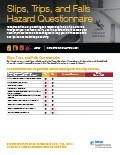
Download Slips, Trips, and Falls Questionnaire (PDF, 856 KB)
Top Categories
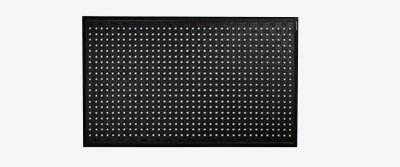
Mops, Brooms, and Buckets
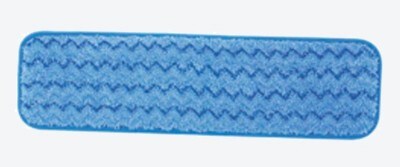
Wipes, Towels, and Cleaning

Tapes and Labels
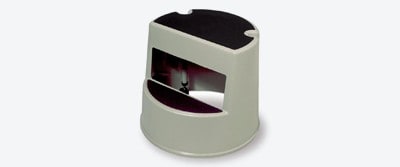
Stools and Carts
Shop All Slips, Trips, and Falls Products

- Slips, Trips, and Falls — Prevention and Response
Slips, Trips, and Falls — Prevention and Response
Find what you need to prevent and respond to slips, trips, and falls throughout your facility. You’ll discover products and services designed to help you minimize accidents and injuries and maximize productivity. Shop top categories, plus featured products from leading brands. And if you need additional assistance, access our guide to prevention and response or contact a safety specialist .

Download Now (PDF, 1.2 MB)
Top Categories
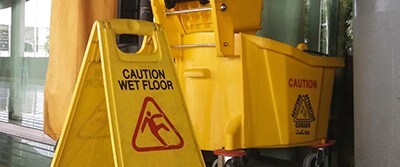
Facility Safety
Browse emergency response and material handling products, plus printers and more.
Spill Control and Containment
Facility Maintenance and Safety
Cleaning Supplies and Equipment
Emergency Response Equipment
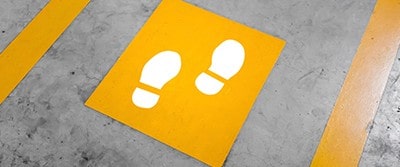
Pedestrian Safety
Shop anti-skid tapes, barricades, cones and mirrors, cables, cord bridges, and more.
Tapes and Adhesives
Traffic Control
Signs and Tags
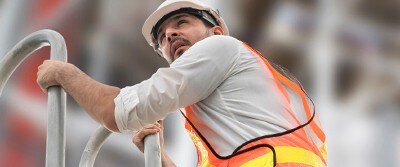
Personal Protective Equipment
Shop above- and below-grade fall protection equipment, plus a variety of non-slip footwear.
Fall Protection and Confined Space Entry
Shoe and Boot Covers
Shop all Safety Products
Featured Products


- Weill Cornell Medicine

Slips, Trips, and Falls: Understanding, Preventing, and Mitigating Risks
By Gian Joseph, Safety Advisor
As we enter the rainy and cold season, we face several risks , which include slips , trips, and fall s in our day-to-day activities. It is important t o be aware of hazards around us and learn how to properly identify and assess any risks with each step.
Slips, trips, and falls (STFs) are common accidents that can lead to severe injuries. These incidents occur in various settings, from homes and workplaces to public spaces , and i t is essential to understand the causes, consequences, and , most importantly, strategies for prevention and mitigation.
1. Understanding the Dynamics of STFs. STFs are caused by the following .
Insu fficient friction between the shoe and the walking surface. Common causes include wet or greasy floors, spills, and loose debris (Slip and Fall Accidents, 2021).
When a person's foot collides with an object or an uneven surface, it caus es them to lose balance. Typical trip hazards include cluttered walkways, electrical cords, uneven flooring, and damaged or upturned mats (Slip and Fall Accidents, 2021).
2. The Impact of STFs
Slips, trips, and falls have far-reaching effects, affecting individuals and society . Personal i njuries range from minor cuts , bruises, sprains , and abrasions to fractures, dislocations, and head injuries (National Safety Council, 2021). The medical expenses associated with treating STF-related injuries can be substantial , including hospital stays, surgeries, rehabilitation, and ongoing care (National Safety Council, 2021). STFs can result in missed workdays and reduced productivity for both individuals and employers. Workers' compensation claims and absenteeism contribute to economic costs (National Safety Council, 2021). Lastly, t he physical and psychological consequences of STFs can limit mobility, independence, and overall quality of life, especially among older adults ( Sahyoun et al., 2020).
3. Prevention and Mitigation Strategies
Preventing and mitigating STFs involves a combination of awareness, environmental modifications, and education . H ere are some ways you can take precaution s against STFs in your daily activities;
Clear Pathways: Maintain clear, unobstructed walkways by removing clutter and tripping hazards such as cords, toys, and loose rugs (Occupational Safety and Health Administration [OSHA], 2002).
Adequate Lighting: Ensure proper lighting in all areas, both indoors and outdoors, to improve visibility and reduce the risk of tripping over obstacles (OSHA, 2002).
Slip-Resistant Flooring: Install slip-resistant flooring materials, especially in areas prone to moisture, like bathrooms and kitchens (OSHA, 2002).
Footwear: Encourage the use of proper footwear with good traction, especially in environments where slip hazards are prevalent ( Sahyoun et al., 2020).
Handrails and Guardrails: Install and maintain handrails and guardrails on stairs, ramps, and elevated platforms to provide support and prevent falls (OSHA, 2002).
Warning Signs: Use signage to alert individuals to potential hazards, such as wet floors or uneven surfaces (OSHA, 2002).
Education and Training: Promote awareness and provide training to individuals on recognizing and avoiding STF hazards (National Institute for Occupational Safety and Health [NIOSH], 2015).
Workplace Safety: Employers should implement safety protocols and conduct risk assessments in the workplace, addressing potential STF risks (NIOSH, 2015).
Regular Maintenance: Routinely inspect and maintain buildings, walkways, and outdoor areas to identify and address potential hazards promptly (NIOSH, 2015).
4. A Holistic Approach to STF Prevention
Preventing and mitigating STFs require a collaborative approach involving individuals, organizations, and communities:
Individuals : Exercise caution when walking, especially in unfamiliar or potentially hazardous environments. Wear appropriate footwear and take your time, especially in wet or slippery conditions ( Sahyoun et al., 2020).
Employers: Create a safe work environment by identifying and mitigating STF risks. Provide training to employees on safety protocols and the proper use of equipment (OSHA, 2002).
Property Owners and Managers: Ensure properties are well-maintained and free from hazards. Regularly inspect and address issues promptly (NIOSH, 2015).
Government and Local Authorities: Enforce building codes and regulations that promote safety, especially in public spaces and commercial buildings (OSHA, 2002).
Conclusion
Slips, trips, and falls are preventable accidents that carry substantial personal, economic, and societal costs. By comprehending the causes, consequences, and prevention strategies, we can significantly reduce the incidence of STFs and mitigate their impact. Whether at home, at work, or in public spaces, prioritizing safety and fostering awareness about STFs is crucial for the well-being of individuals and communities. Let us strive collectively to create environments where everyone can move safely and confidently, free from the fear of falling.
References:
National Institute for Occupational Safety and Health (NIOSH). (2015). Preventing Slips, Trips, and Falls in Wholesale and Retail Trade Establishments. https://www.cdc.gov/niosh/docs/2015-100/pdfs/2015-100.pdf
National Safety Council. (2021). Injury Facts. https://injuryfacts.nsc.org/work/overview/work-safety-introduction/work-...
Occupational Safety and Health Administration (OSHA). (2002). OSHA Publication 3151-12R. Preventing Slips, Trips, and Falls in Wholesale and Retail Trade Establishments. https://www.osha.gov/Publications/osha3151.pdf
Sahyoun , N. R., Pratt, L. A., & Lentzner , H. (2020). The Changing Profile of Nursing Home Residents: 1985-1997. Journal of Aging and Health, 12(3), 336-363.
Slip and Fall Accidents. (2021). InjuryClaimCoach.com. https://www.injuryclaimcoach.com/slip-and-fall-accidents.html
Please note that the sources cited are accurate as of the time of writing this article. For the most current information, consult authoritative sources and local health authorities.
Go to the staff directory for individual contacts within EHS. You may also use the Weill Cornell Medicine online directory to search for faculty and staff.
Create an EHS Incident
Weill Cornell Medicine Environmental Health and Safety 402 East 67th Street Room LA-0020 New York, NY 10065 Phone: (646) 962-7233 Fax: (646) 962-0288
Jump to navigation
For medical, fire or law enforcement assistance, call 911 For EH&S emergencies, including after hours, call (650) 725-9999
- Report a Safety Concern
- Staff Directory
Slip, Trip, and Fall Prevention
To minimize injury or death from incidents involving slips, trips, and falls, Stanford has developed prevention procedures, including worksite evaluations, hazard elimination, and employee training.
The objectives of these procedures are to:
- Identify working environments where slip, trip, and fall hazards are most likely to occur.
- Eliminate identified hazards.
- Train Stanford employees working in environments where hazards are likely to arise.
- Maps & Directions
- Search Stanford
- Terms of Use
- Emergency Info
© Stanford University , Stanford , California 94305 . Copyright Complaints

EHS Daily Advisor
Practical EHS Tips, News & Advice. Updated Daily.
Back to Basics, Injuries and Illness
Back to basics: slips, trips, and falls.
Updated: Oct 23, 2023
Back to Basics is a weekly feature that highlights important but possibly overlooked information that any EHS professional should know. This week, we examine slips, trips, and falls.
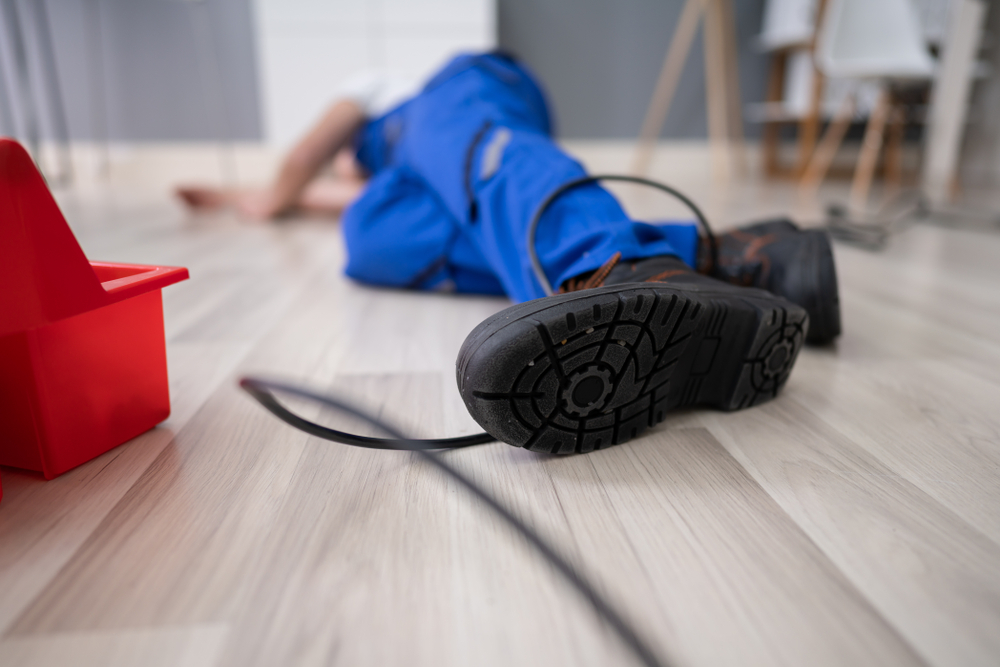
How much are workplace slips, trips, and falls costing you?
“Falls on the same level” often get lumped together with falls from height in slips, trips, and falls. While falls from height can sometimes be fatal, falls on the same level can lead to costly nonfatal injuries, resulting in several days away from work for injured workers and workers’ compensation claims for employers.
According to insurer Liberty Mutual, falls on the same level cost employers $8.98 billion a year. Falls on the same level are the second-leading cause of seriously disabling workplace injuries in the insurer’s 2023 Liberty Mutual Workplace Safety Index .
“Overexertion involving outside sources,” or lifting heavy objects, is the index’s leading cause of disabling injuries.
“Slip or trip without fall” is the ninth leading cause of disabling injury, according to Liberty Mutual’s index. Liberty Mutual reported that injuries on slippery or uneven walkways cost employers $1.98 billion a year.
First, some definitions: Slips are a loss of balance directly caused by too little friction between workers’ feet and walking surfaces. Wet surfaces, spills, and weather hazards like ice and snow can lead to a lack of friction.
Trips occur when workers’ feet hit an object and workers are moving with enough momentum to be thrown off balance.
Falls on the same level occur when workers get too far off their center of balance.
Safety professionals aware of slip, trip, fall hazards
Travelers, another insurer, reported that slips, trips, and falls on the same level are the second-leading cause of injury, accounting for 15% of all accidents, with approximately 25,000 slip, trip, and fall accidents occurring daily in the United States.
According to the National Safety Council (NSC), falls on the same level are the third-leading type of preventable injury at work after exposure to harmful substances and overexertion injuries. Falls on the same level affect every industry and workplace but are prevalent in the service, healthcare, and retail industries, according to the NSC.
Data shows that the median number of days away from work following a fall on the same level is 12 days.
The NSC suggests that effective signage can help prevent injuries, regulatory violations, and higher insurance premiums.
Slip, trip, and fall hazards show up in many industries, but wholesale and retail trade (WRT) establishments suffer high rates of slip, trip, and fall injuries. The National Institute for Occupational Safety and Health (NIOSH) offered several recommendations for protecting workers in the wholesale and retail industries.
Hazardous workplace factors include boxes or containers that obstruct workers’ field of vision; ice, rain, and snow; loose mats or rugs; poor lighting; spills that can create slippery surfaces; and walking surfaces that are in disrepair, have protruding nails and boards, or have changes in floor height.
NIOSH’s recommendations for employers include the following:
- Develop a written slip, trip, and fall prevention policy that spells out both employer and worker responsibilities.
- Ensure that aisles and passageways are free of clutter and other tripping hazards.
- Provide proper lighting in all areas indoors and outdoors to reduce shadows, dark areas, and glare so that trip hazards or surface irregularities are clearly visible, and promptly replace burnt-out light bulbs.
- If electrical cords are regularly used in a workspace, install outlets so that cords don’t cross walkways.
- Select flooring material according to the work performed in an area.
- Provide cleanup supplies—paper towels, absorbent material, “wet floor” signs, etc.—at convenient locations in the facility.
- Provide umbrella bags to prevent rainwater from dripping onto the floor.
- Use mats to provide slip-resistant walking surfaces by absorbing liquid and removing dirt, debris, and liquid from shoes. Mats should be large enough so that several footsteps fall on the mat and clean contaminants off the shoes.
- Provide water-absorbent mats near entrances and other areas where water, ice, or snow may drip or be tracked onto the floor.
- In grocery stores, ensure water from produce spray misters is directed onto produce and not spraying onto the floor.
- In grocery stores, provide customers with paper towels and plastic bags and for wet produce to prevent it from dripping water onto the floor.
You should supplement engineering controls with worker training. You need to train employees to identify slip, trip, and fall hazards and how to prevent slips, trips, and falls by using safe cleaning procedures and placing caution signs and/or cones around the site to warn other employees and visitors to avoid wet walking surfaces.
NIOSH also has employer guidance for preventing slips, trips, and falls in health care. According to NIOSH, the top slip, trip, and fall hazards in health care are:
- Contaminants (fluids, food, grease, oil, and water) on the floor;
- Poor drainage of drains and pipes;
- Walking surface irregularities indoors and outdoors like uneven flooring or ground and holes, protrusions, and rocks;
- Weather conditions like ice and snow;
- Inadequate lighting;
- Stairs and handrails;
- Stepstools and ladders;
- Tripping hazards like clutter, loose cords, hoses, wires, and medical tubing; and
- Improper use of floor mats and runners.
NIOSH’s guide includes an extensive checklist of slip, trip, and fall hazards that should be addressed in a healthcare facility.
OSHA has its own checklist for recognizing slip, trip, and fall hazards in the workplace. The list covers the general work environment, as well as aisles and walkways; escalators; elevated surfaces; floor and wall openings; ladders and scaffolding; parking lots and sidewalks; and ramps, stairs, and stairways.
NIOSH also warns young retail workers that slips, trips, and falls can result in bruises, bumps, cuts, fractures, scratches, sprains, and strains. The institute cautions young workers to clear stairs and walkways of tripping hazards like cords and wires, clutter, and empty cartons; to use handrails when walking up and downstairs; and to clean up spills and anything slippery on floors and the rungs, steps, and feet of ladders.
Control measures and training can be further supplemented with personal protective equipment. Employees who work on wet or contaminated walking surfaces should wear slip-resistant shoes. Workers should choose footwear that’s also resistant to chemicals, heat, and oil.
NIOSH has looked into the value of wearing slip-resistant shoes.
Laboratory studies of slip-resistant footwear to reduce slips, trips, and falls had shown promise in reducing slips, but until a few years ago, there was little research showing the effectiveness of slip-resistant shoes.
In 2019, NIOSH researched the effectiveness of slip-resistant shoes in a study of 17,000 food service workers in 226 school districts serving kindergarten through 12th-grade students. Workers were randomly assigned either to a group that received no-cost, “5-star-rated” slip-resistant shoes or to a group that bought their own slip-resistant shoes.
Researchers looked at workers’ compensation injury claims for accidents caused by slipping on wet or greasy surfaces to evaluate the effectiveness of the shoes.
The group that was provided with highly rated slip-resistant shoes saw a 67% reduction in claims for slip injuries.
There was a baseline of 3.54 slipping injuries per 10,000 months worked among the intervention group, which was reduced to 1.18 slipping injuries per 10,000 months worked after slip-resistant shoes were provided.
Employees who handle materials should ensure the walkways are unobstructed before transporting large materials that might block their view. They should walk with caution and make wide turns at corners. They also should push rather than pull carts to allow a better line of sight.
Housekeeping measures can also help prevent slips, trips, and falls. Your housekeeping policies should include:
- Cleaning floors and work surfaces as soon as they become wet;
- Inspecting refrigerated and freezer cases for water leakage onto the floor surfaces and placing absorbent strips and water-absorbent mats on the floor until the unit is repaired;
- Placing warning signs in wet-floor areas and removing them promptly when floors are clean and dry;
- Using no-skid waxes in slippery areas and using soap that doesn’t leave a slippery residue;
- Maintaining drainage and providing false floors (elevated floors usually 2 to 4 inches above the structural floor designed to provide a surface for safe transit), platforms, or nonslip mats during wet or oily processes;
- Cleaning only one side of a passageway at a time to allow room for passing;
- Keeping passageways clear at all times and marking permanent aisles and passageways; and
- Taping or anchoring electrical cords to floors if they cross walkways.
Workplace housekeeping
In a safety talk handout , the NSC emphasizes the importance of workplace housekeeping in factories and manufacturing plants, offices, and warehouses.
Workplace housekeeping can prevent slip, trip, and fall hazards, as well as control fire hazards and prevent falling objects.
The NSC recommends housekeeping measures suggested by the Canadian Centre for Occupational Safety and Health (CCOSH) that include:
- Cleaning all spills immediately;
- Mopping or sweeping debris from floors;
- Marking spills and wet areas;
- Removing obstacles from walkways and keeping walkways free of clutter;
- Securing carpets, mats, and rugs that don’t lay flat (tacking or taping floor coverings, for example);
- Ensuring file cabinet or storage drawers are closed;
- Covering cables or cords that cross walkways; and
- Keeping working areas and walkways well lit and replacing used light bulbs and faulty light switches.
Some industry groups tout “how to fall” training as a method of mitigating slip, trip, and fall injuries. Others offer “safe walking” tips like “watch where you are going,” “be aware of your environment,” “keep an eye out for changes in elevation,” and “take your time and don’t rush.”
According to the CCOSH, specialty footwear or training on proper walking and “safe falling” will never be fully effective without adequate housekeeping practices.
Federal regulation
Slip, trip, and fall hazards are addressed in the Occupational Safety and Health Administration’s (OSHA) walking-working surfaces standards (29 Code of Federal Regulations (CFR) Part 1910 Subpart D). In 2016, OSHA issued a final rule revising subpart D to incorporate advances in technology, industry best practices, and national consensus standards to ensure cost-efficient and effective worker protection. The revised rule requires employers to inspect walking-working surfaces regularly to correct, repair, or guard against hazardous conditions.
OSHA defines a “walking-working surface” as “any horizontal or vertical surface on or through which an employee walks, works, or gains access to a work area or workplace location.” Ensure aisles and walkways in your facility are kept clear of slipping or tripping hazards that lead to falls on the same level.
Leave a Reply Cancel reply
Your email address will not be published. Required fields are marked *
Save my name, email, and website in this browser for the next time I comment.
This site uses Akismet to reduce spam. Learn how your comment data is processed .

The Science Behind Slip, Trip, and Fall Prevention
Slip, trip, and fall claims carry a high frequency, but typically, low severity, with their associated costs totaling over $11 billion annually. studies focused on surface interactions, in conjunction with human behaviors, may help determine best practices for preventing these incidents..
September 11, 2023

Slipping occurs due to a lack of traction between a foot or shoe sole and the walking surface, but conditions like spills, wet or icy weather elements, or loose rugs or mats are typically common causes of the slip. The science of interacting surfaces in relative motion, known as tribology, can help risk managers understand the importance of proper footwear and floor maintenance, however, there is so much more to account for when understanding why slip, trip, and fall (STF) incidents occur.
“Tribology can get as granular as the direction of the tread to increase traction,” said Sonya Luisoni, Senior Risk Control Manager at Safety National. “Yet, these studies are typically conducted in a lab under a controlled environment, which does not translate into the real world very easily. To understand the full scale of the risk, organizations need a more holistic view that accounts for specifics like age, gender, body mechanics, and health risks.”
Here we examine the types of incidents that happen, and what may cause them outside of tribology practices.
Types of STFs
When examining slips, trips, and falls on the same level (STFL) versus those that occur from heights or stairs, there are several classifications. While the nature of work can vary the types of accidents, these are the most common.
Microslip is a slip shorter than 3 cm and generally goes unnoticed.
Slip is as long as 8-10 cm, resulting in instinctive efforts to regain postural control.
Slide is uncontrolled movement of the heel typically when slip is greater than 10 cm. Likely to lead to a loss of balance and result in a fall.
Trip occurs when the swing phase of the foot is interrupted unexpectedly due to inadequately clearing the ground. Irregularities of as little as 5 mm of walking surface can be sufficient to cause a trip.
Loss of balance can be the result of an unexpected forcible connection with an object or person. It can also occur with forcible movement of the floor itself, as when standing in a moving vehicle.
Stumbling is a consequence of slip, trip or loss of balance and refers to the process of falling and subsequent attempts to regain balance rather than being a triggering event.
Biomechanics Increasing STF Risks
Lab environments are helpful for understanding how footwear tread, floor materials, and weather elements impact traction, but they cannot replicate the myriad of gaits and tasks of an individual. These characteristics that affect the motion of our body, or biomechanics, can severely influence falls and severity.
- Gait: Walking involves a complicated combination of challenging central nervous system (CNS) functions. It is estimated that while walking, 80% of the gait cycle is in a continuous state of instability. The dynamic stability is lost and regained in every gait cycle during normal walking. Recovery from a slip, slide or trip relies on a complex interplay of neural and motor control. There is also a level of expectancy that this natural interplay will keep us safely walking. When the expectation does not meet reality, we interrupt the flow and can end up injured from a slip, slide, or fall injury. That may explain why STFs are more prevalent in older and heavier individuals.
- Work Pace: Increased walking speed reduces dynamic walking stability in part because the faster pace increases the required coefficient of friction (RCOF). If the shoe and floor cannot provide the appropriate friction, there’s a risk of slip, slide or fall. Tripping differs from slipping and sliding in that an object abruptly disturbs the dynamic stability of walking. Recovery from a trip depends on factors such as lower extremity muscular power, ability to restore control of the flexing truck, reaction time, step length and walking speed.
- Load Carrying: Carrying a load can be a major factor contributing to STF injuries. As one would expect, the normal recovery mechanisms we employ to recover from a disturbance have to contend with the additional weight of the load. Often, this correction cannot be accomplished in the split second available before losing control.
For more expertise, guidance or resources on this topic, please contact [email protected] .
RELATED ARTICLES

Insights from Losses: Preventing K-12 School Lab Incidents
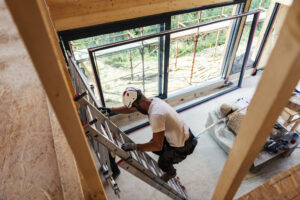
5 Ladder Safety Tips to Take a Step in the Right Direction

The Top 6 Fleet Safety Program Improvement Strategies (Infographic)
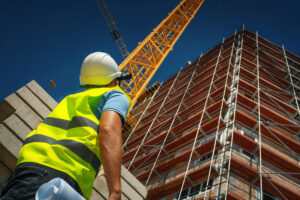
Tactics to Prevent OSHA’s Most Frequently Cited Safety Standards
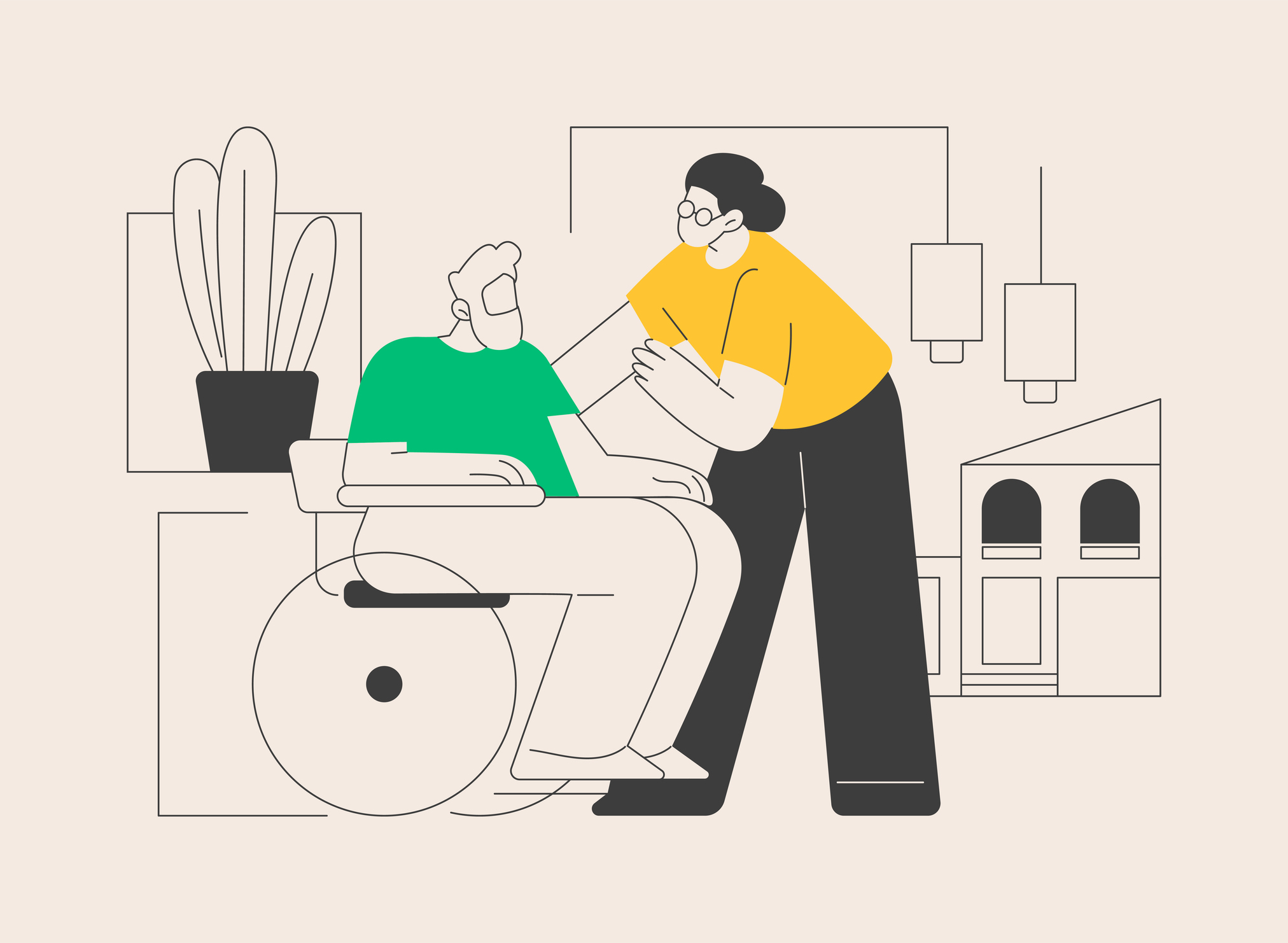
3 Reasons for Healthcare Facilities to Prioritize Safe Patient Handling
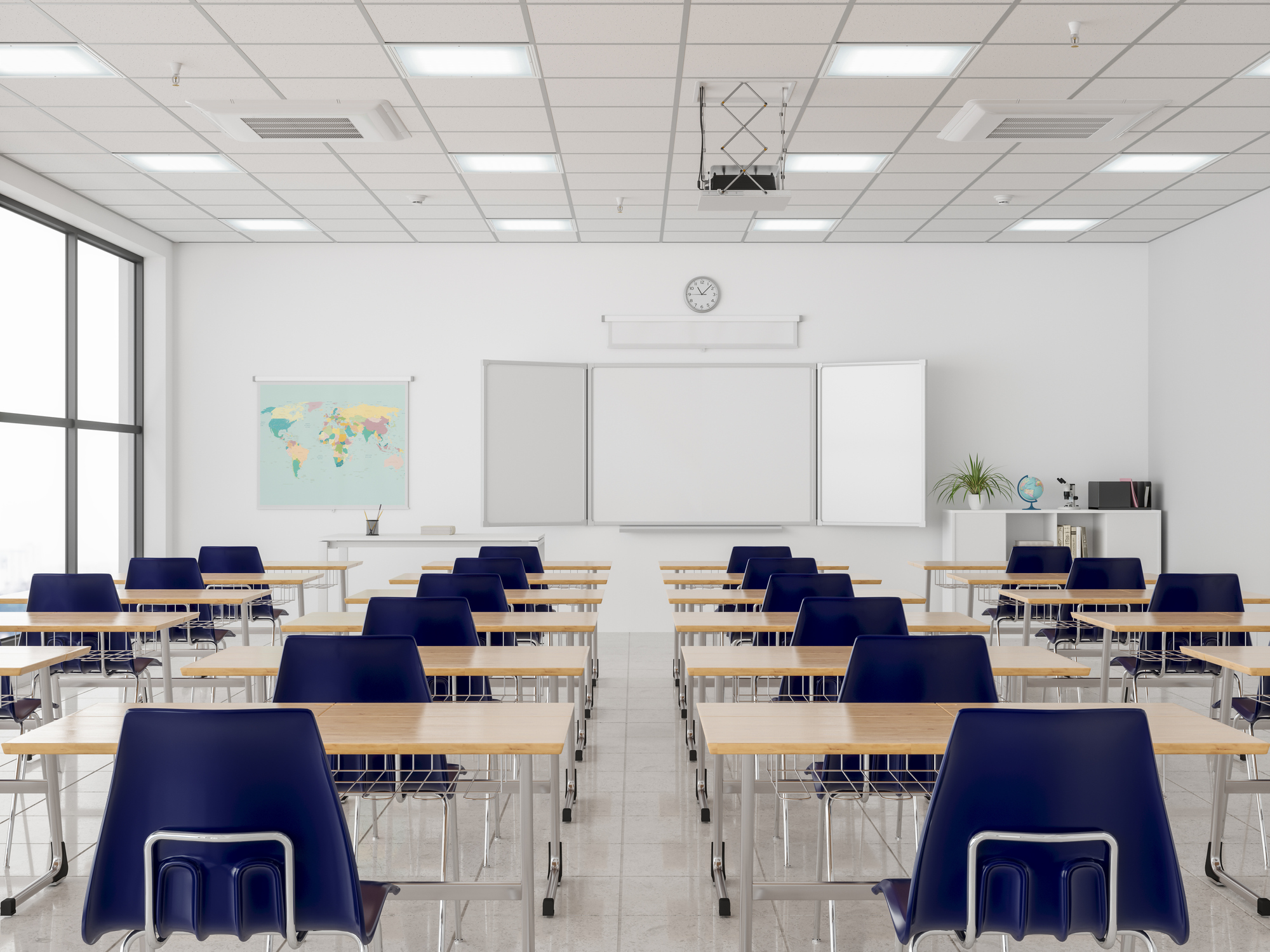
How to Apply Enterprise Risk Management in K-12 Education

6 Advanced Capabilities of Wearable Technology

Are You Protecting Your Young Workers?
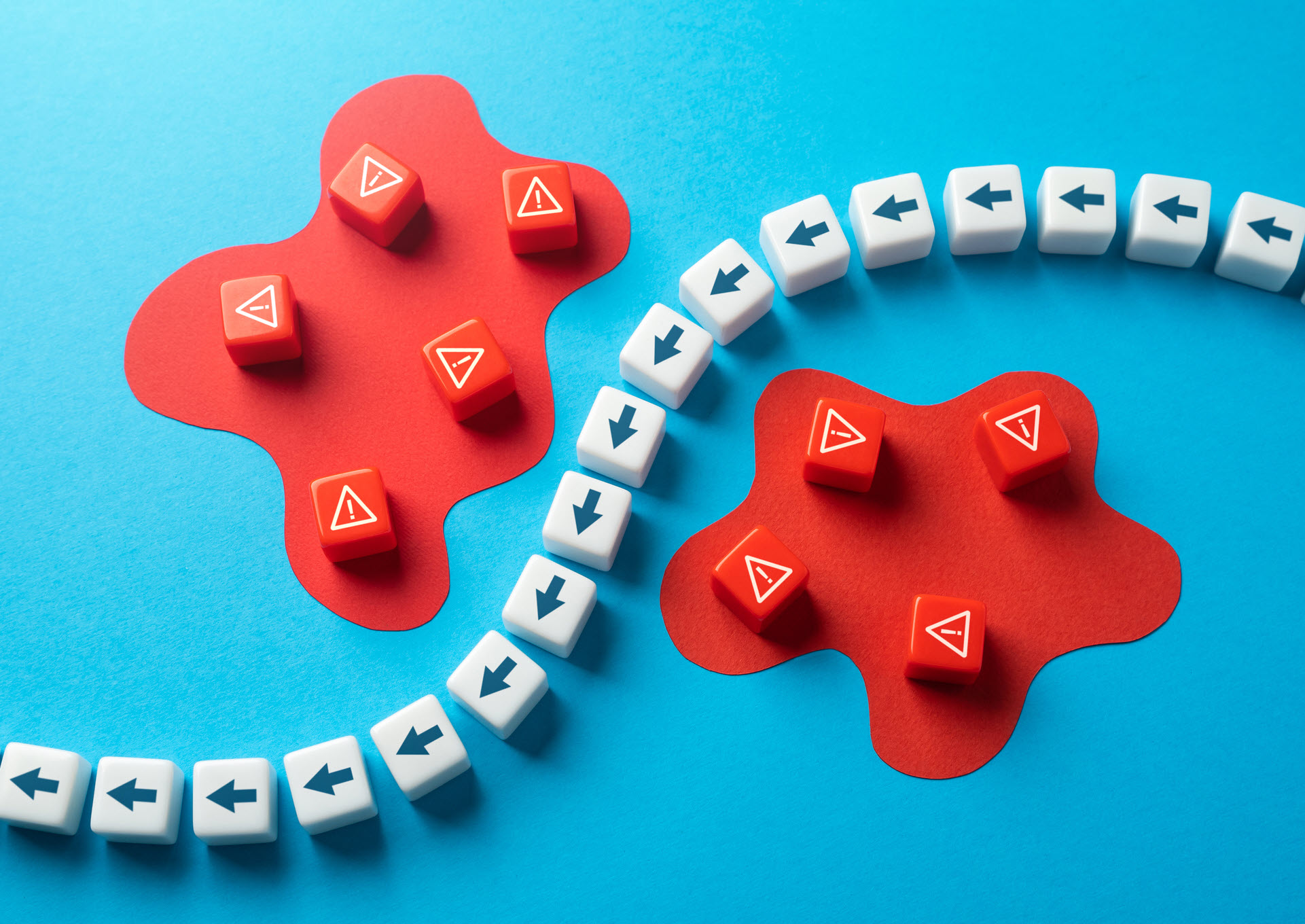
Why Your Organization Needs a Near-Miss Management System
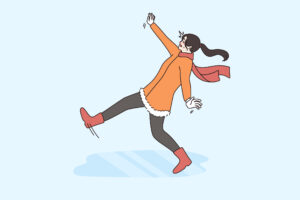
Address This Major Risk to Help Prevent Costly Premises Liability Claims
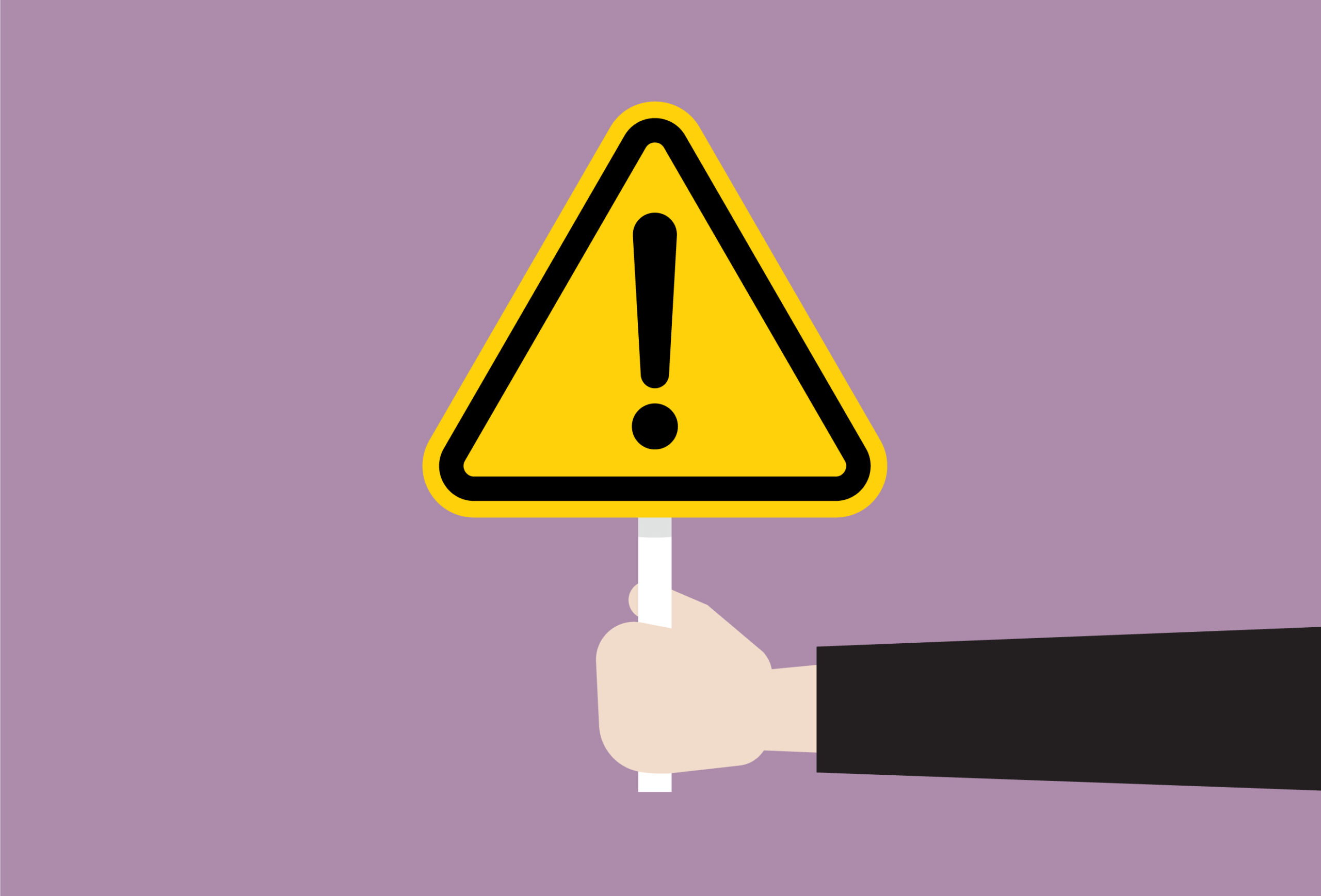
How to Improve Situational Awareness in Your Workforce
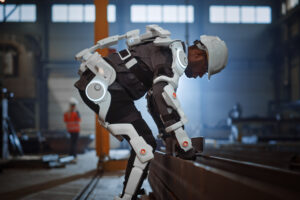
Your Wearable Tech Questions Answered

5 Steps to Safeguard Students by Preventing Sexual Abuse

What a Great Cyber Policy Should Cover

Visual Media’s Role in Marketing Your Risk Management Program
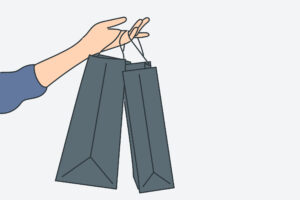
5 Risk Management Issues to Avoid During Peak Retail Season
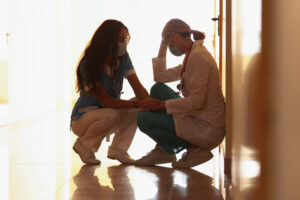
Keeping Clinicians Safe When Responding to Combative Patients
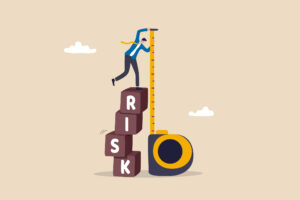
Why Your RMIS Dashboard Data Should Include Leading Indicators

New Law Provides Additional Protections for Pregnant Workers

Using Anger Management Strategies to Reduce Workplace Violence
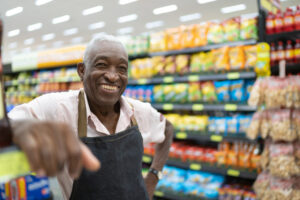
Investing in an Aging Workforce: Unlocking the Value of Older Workers
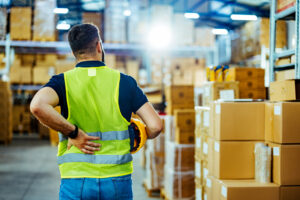
OSHA’s New NEP Targets Warehouse and Distribution Centers
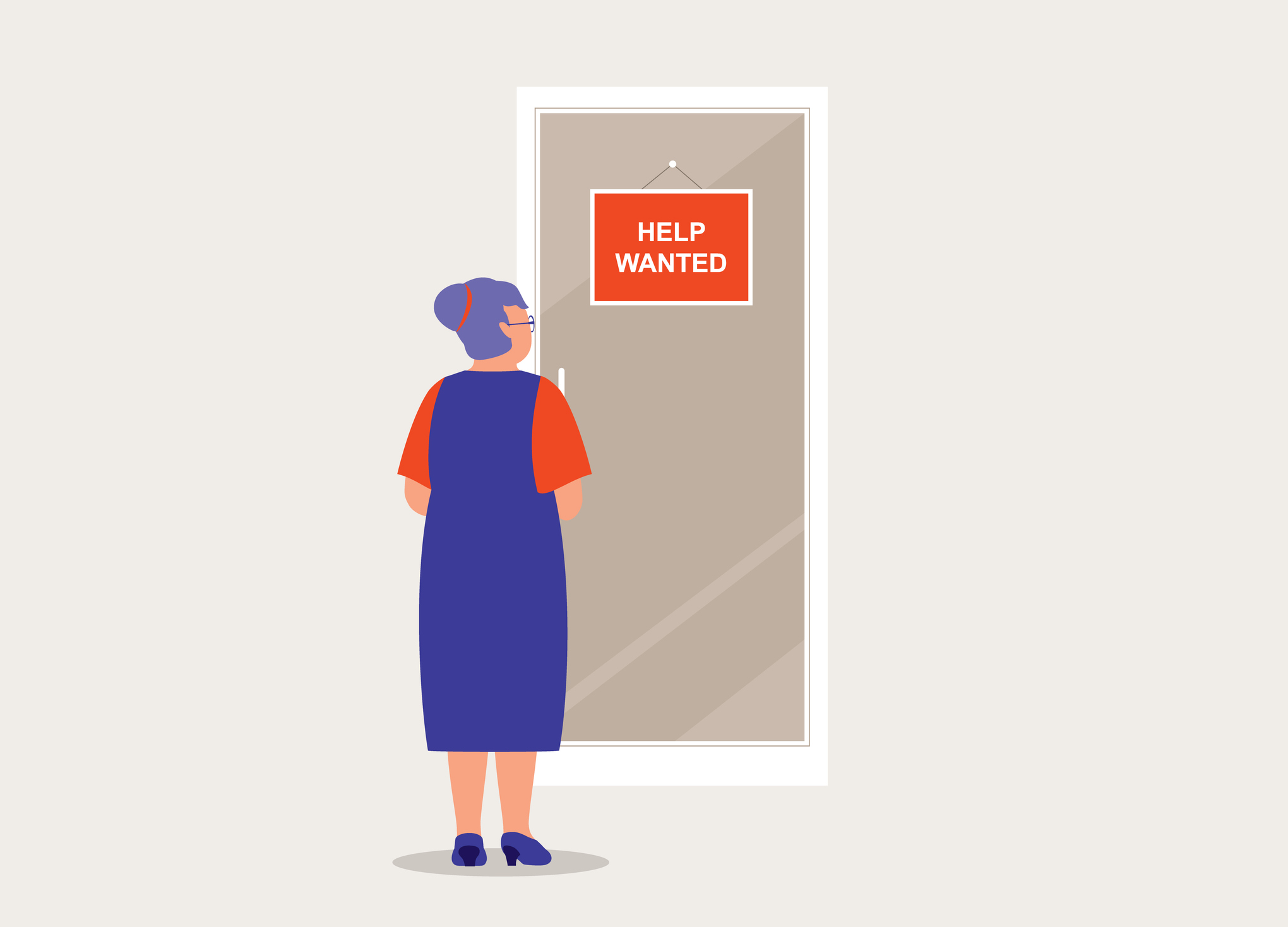
The Impact of the Labor Shortage and an Aging Workforce
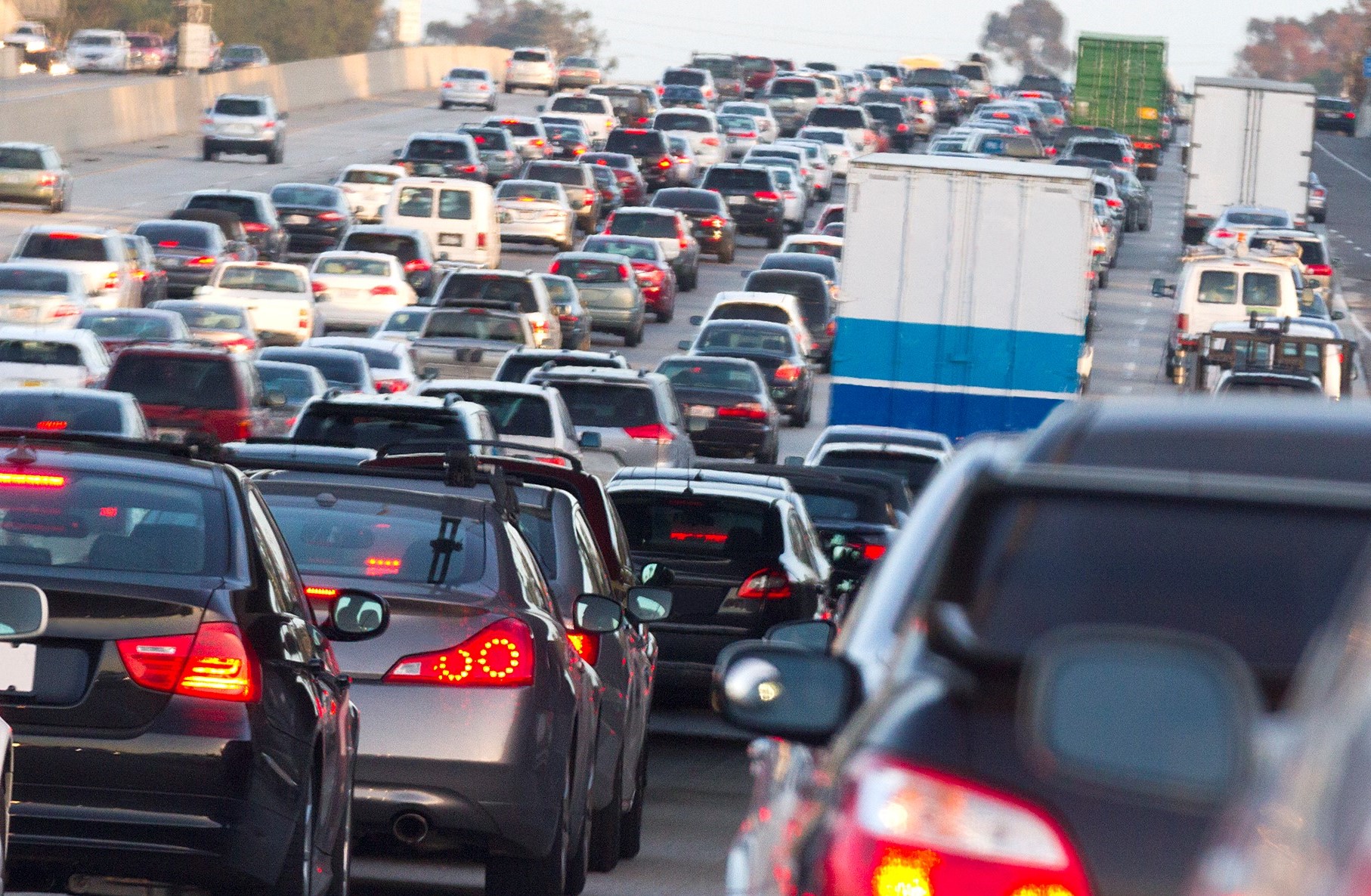
Insights from Losses: Preventing Rear-End Collisions

IMAGES
VIDEO
COMMENTS
Same level falls include falls from ladders, stools and stairs and comprise 65% of all fall injuries. Falls from heights include falls off scaffolding. What are the common causes and some ways to minimize slips, trips and falls in laboratories? 1. Wet or slippery floors: •Please always be on the lookout for slip hazards, such as spills, including
Slips, trips and falls (STF's) are common and usually preventable incidents in the lab. First, let's lay out what a slip, a trip and a fall look like. We'll give you the stats on the costs behind STF's, cover the 3 main areas of concern, and give you tips on implementing a safety strategy for your lab.
Wet floors or spills and clutter that can lead to employee slips/trips/falls. Requirements under OSHA's Walking-Working Surfaces Standard, 29 CFR 1910.22. Keep floors clean and dry. [ 29 CFR 1910.22 (a) (2)] Keep aisles and passageways clear and in good repair, with no obstruction across or in aisles that could create a hazard. [ 29 CFR 1910.22 ...
Slips, trips and falls at work are the second most common cause of lost-workday injuries according to NIOSH (National Institute for Occupational Safety and Health). Laboratories by nature have features which can exacerbate these hazards. Frequently wet surfaces, spills and splashes, and constant washing of glassware can all contribute to the risk of slips, trips and falls.
1. Introduction. Falls on the same level are among the leading causes of accidental injuries and fatalities across many workplaces. Such falls, many subsequent to slips and trips, were ranked as the second most frequent cause of disabling workplace injuries after overexertion—accounting for 19.2 % of these injuries and imposing direct costs of $11.2 billion in the USA (Liberty Mutual, 2018).
The team followed OHSA definitions: slip is the lack of traction between footwear and walking surface; a trip impedes lower extremity movement. A fall is a total loss of balance from the same or lower level. 3 Before inclusion in the data, the team leader carefully reviewed and evaluated the events.
Slips, trips and falls when walking on a slope (ramp, hill etc.) involve a change of height and have different biomechanics, tribology and loss of balance characteristics to STFL, so they are not covered. ... showed that lower limb strength could be a critical factor in trip recovery observed in laboratory situations, thus strength training ...
Occupational slips, trips and falls on the same level (STFL) are a serious problem, with substantial injury and economic consequences reported worldwide. ... Citation 2005b, Citation 2005c), showed that lower limb strength could be a critical factor in trip recovery observed in laboratory situations, thus strength training might help reduce ...
Slips, Trips, and Falls - Prevention and Response. Find what you need to prevent and respond to slips, trips, and falls throughout your facility. You'll discover products and services designed to help you minimize accidents and injuries and maximize productivity. Shop top categories, plus featured products from leading brands.
Slips, Trips & Falls In 2015, the U.S. Bureau of Labor Statistics reported over 223,000 non-fatal falls on the job. The majority of those falls—149,180—were not from a height or elevation. These workers fell on the same level due to slipping on a slick surface or from tripping over a hazard in the work area. Many of these incidents resulted
Slips, trips, and falls are the second most common cause of lost-workday injuries in hospitals, according to the Centers for Disease Control and Prevention and the National Institute of Occupational Safety and Health. ... trips, and falls hazard reduction program to keep your team members safe in your laboratory or healthcare facility. Download ...
Given this, it's best to place proper lighting in access and egress points such as halls, ramps, stairs, and exits. 3. Install safety signs. Safety signs and markers are a must in preventing slips, trips, and falls. Installing them warns people about walking in hazardous spaces to keep them safe.
Slips, Trips, and Falls — Prevention and Response. Find what you need to prevent and respond to slips, trips, and falls throughout your facility. You'll discover products and services designed to help you minimize accidents and injuries and maximize productivity. Shop top categories, plus featured products from leading brands.
Causes of Slips, Trips, and Falls Hazards leading to slips, trips, and falls are often overlooked as these are not always noticeable hazards. Especially in busy work environments where there is considerable foot traffic, the probability of injury from a slip, trip and/or fall is a big concern. There are three main components that are essential ...
Steps to Prevent Falls Lab Safety ulture Get Involved With the YPD Driving After Dark What's Inside e o Each year, the first full week of the fall season is dedicated to helping prevent falls. Fall Prevention Awareness Week takes place September 22nd-28th and serves as a reminder for both young and old just how common fall-related injuries ...
Prevent falls from heights While not as common as falls to the same level, falls from heights are often deadlier. Fatal falls to a lower level typically involve injuries to the head or multiple body parts. Overall, about 47% of fatal falls to a lower level occur at heights of 20 feet or less, while 17% occur at heights of greater than 30 feet.
Slips, trips, and falls have far-reaching effects, affecting individuals and society. Personal i njuries range from minor cuts, bruises, sprains, and abrasions to fractures, dislocations, and head injuries (National Safety Council, 2021). The medical expenses associated with treating STF-related injuries can be substantial, including hospital stays, surgeries, rehabilitation, and ongoing care ...
Understanding forces involved in slips, trips, and falls. Friction (traction) is the resistance between things. There's friction between your shoes and the ground. Without enough friction, you can slip and fall. With enough friction, you can move safely and stay balanced. Momentum is a combination of weight and speed.
Slips, Trips and Falls. It may come as a surprise that the second leading cause of unintentional injury-related death is falls. In 2021, 44,686 people died in falls at home and at work, according to Injury Facts ®. For working adults, depending on the industry, falls can be the leading cause of death.
The steps varied in height, causing the person to trip and fall, resulting in an ankle sprain and arm injury. On March 13, 2023, a person was ascending the steps at the entry of Bldg. 70A. Their trailing foot caught the edge of the top step, causing them to fall forward. The fall led to their shoulder impacting a glass door, which broke.
Slip, Trip, and Fall Prevention. To minimize injury or death from incidents involving slips, trips, and falls, Stanford has developed prevention procedures, including worksite evaluations, hazard elimination, and employee training. Identify working environments where slip, trip, and fall hazards are most likely to occur.
NIOSH has looked into the value of wearing slip-resistant shoes. Laboratory studies of slip-resistant footwear to reduce slips, trips, and falls had shown promise in reducing slips, but until a few years ago, there was little research showing the effectiveness of slip-resistant shoes.
Slip is as long as 8-10 cm, resulting in instinctive efforts to regain postural control. Slide is uncontrolled movement of the heel typically when slip is greater than 10 cm. Likely to lead to a loss of balance and result in a fall. Trip occurs when the swing phase of the foot is interrupted unexpectedly due to inadequately clearing the ground.